What Makes a Great School?
- Posted October 23, 2017
- By Jack Schneider

What are the signs that a school is succeeding?
Try asking someone. Chances are, they’ll say something about the impact a school makes on the young people who attend it. Do students feel safe and cared for? Are they being challenged? Do they have opportunities to play and create? Are they happy?
If you’re a parent, getting this kind of information entails a great deal of effort — walking the hallways, looking in on classrooms, talking with teachers and students, chatting with parents, and watching kids interact on the playground.
Since most of us don’t have the time or the wherewithal to run our own school-quality reconnaissance missions, we rely on rumor and anecdote, hunches and heuristics, and, increasingly, the Internet.
So what’s out there on the web? Are our pressing questions about schools being answered by crowdsourced knowledge and big data sets?
As it turns out, no.
There’s information, certainly. But mostly it doesn’t align with what we really want to know about how schools are doing. Instead, most of what we learn about schools online — on the websites of magazines , on school rating sites , and even on real estate listings — comes from student standardized test scores. Some may include demographic information or class size ratios. But the ratings are derived primarily from state-mandated high stakes tests.
One consequence of such limited and distorting data is an impoverished public conversation about school quality. We talk about schools as if they are uniformly good or bad, as if we have complete knowledge of them, and as if there is agreement about the practices and outcomes of most value.
The first problem with this state of affairs is that test scores don’t tell us a tremendous amount about what students are learning in school. As research has demonstrated, school factors explain only about 20 percent of achievement scores — about one-third of what student and family background characteristics explain. Consequently, test scores often indicate much more about demography than about schools.
Even if scores did reflect what students were learning in school, they’d still fail to address the full range of what schools actually do. Multiple-choice tests communicate nothing about school climate, student engagement, the development of citizenship skills, student social and emotional health, or critical thinking. School quality is multidimensional. And just because a school is strong in one area does not mean that it is equally strong in another. In fact, my research team has found that high standardized test score growth can be correlated with low levels of student engagement . Standardized tests, in short, tell us very little about what we actually value in schools.
One consequence of such limited and distorting data is an impoverished public conversation about school quality. We talk about schools as if they are uniformly good or bad, as if we have complete knowledge of them, and as if there is agreement about the practices and outcomes of most value.
Another consequence is that we can make unenlightened decisions about where to live and send our children to school. Schools with more affluent student bodies tend to produce high test scores. Perceived as “good,” they become the objects of desire for well-resourced and quality-conscious parents. Conversely, schools with more diverse student bodies are dismissed as bad.
GreatSchools.org gives my daughter’s school — a highly diverse K–8 school — a 6 on its 10-point scale. The state of Massachusetts labels it a “Level 2” school in its five-tier test score-based accountability system. SchoolDigger.com rates it 456th out of 927 Massachusetts elementary schools.
How does that align with reality? My daughter is excited to go to school each day and is strongly attached to her current and former teachers. A second-grader, she reads a book a week, loves math, and increasingly self-identifies as an artist and a scientist. She trusts her classmates and hugs her principal when she sees him. She is often breathlessly excited about gym. None of this is currently measured by those purporting to gauge school quality.
Better measures aren’t a panacea. But so much might be accomplished if we had a shared understanding of what we want our schools to do, clear language for articulating our aims, and more honest metrics for tracking our progress.
Of course, I’m a professor of education and my wife is a teacher. Our daughter is predisposed to like school. So what might be said objectively about the school as a whole? Over the past two years, suspensions have declined to one-fifth of the previous figure, thanks in part to a restorative justice program and an emphasis on positive school culture. The school has adopted a mindfulness program that helps students cope with stress and develop the skill of self-reflection. A new maker space is being used to bring hands-on science, technology, engineering, and math into classrooms. The school’s drama club, offered free after school twice a week, now has almost 100 students involved.
The inventory of achievements that don’t count is almost too long to list.
So if the information we want about schools is too hard to get, and the information we have is often misleading, what’s a parent to do?
Four years ago, my research team set out to build a more holistic measure of school quality. Beginning first in the city of Somerville, Massachusetts, and then expanding to become a statewide initiative — the Massachusetts Consortium for Innovative Education Assessment — we asked stakeholders what they actually care about in K–12 education. The result is a clear, organized, and comprehensive framework for school quality that establishes common ground for richer discussions and recognizes the multi-dimensionality of schools.
Only after establishing shared values did we seek out measurement tools. Our aim, after all, was to begin measuring what we value, rather than to place new values on what is already measured.
For some components of the framework, we turned to districts, which often gather much more information than ends up being reported. For many other components, we employed carefully designed surveys of students and teachers — the people who know schools best. And though we currently include test score growth, we are moving away from multiple-choice tests and toward curriculum-embedded performance assessments designed and rated by educators rather than by machines.
Better measures aren’t a panacea. Segregation by race and income continues to menace our public schools, as does inequitable allocation of resources. More accurate and comprehensive data systems won’t wash those afflictions away. But so much might be accomplished if we had a shared understanding of what we want our schools to do, clear and common language for articulating our aims, and more honest metrics for tracking our progress.
Illustration: Wilhelmina Peragine

More on Testing
We talk with Daniel Koretz, author of The Testing Charade , about the purpose, the misuse, and the abuse of standardized testing .

Usable Knowledge
Connecting education research to practice — with timely insights for educators, families, and communities
Related Articles
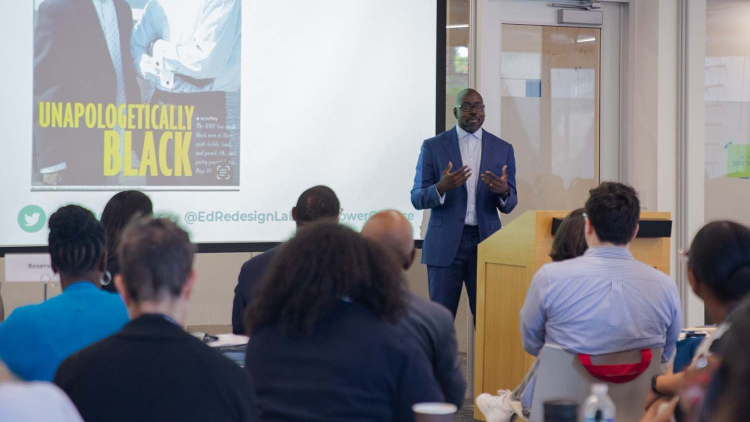
Transforming Place Through Neighborhood Leadership
Community-based leaders from around the country gathered at HGSE to share new ideas and guidance around closing the opportunity gap

Using E-Books to Get Young Readers Talking
New research shows how parents can help kids — and themselves — use e-books as a tool to improve early childhood development
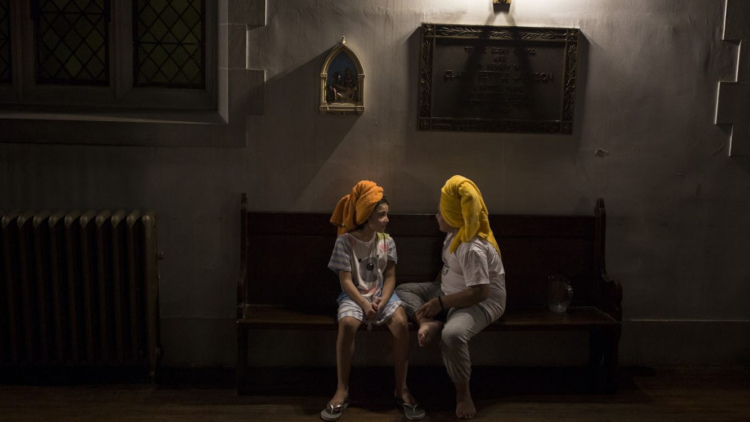
Stories Shared
Greater Good Science Center • Magazine • In Action • In Education
Our Best Education Articles of 2020
In February of 2020, we launched the new website Greater Good in Education , a collection of free, research-based and -informed strategies and practices for the social, emotional, and ethical development of students, for the well-being of the adults who work with them, and for cultivating positive school cultures. Little did we know how much more crucial these resources would become over the course of the year during the COVID-19 pandemic.
Now, as we head back to school in 2021, things are looking a lot different than in past years. Our most popular education articles of 2020 can help you manage difficult emotions and other challenges at school in the pandemic, all while supporting the social-emotional well-being of your students.
In addition to these articles, you can also find tips, tools, and recommended readings in two resource guides we created in 2020: Supporting Learning and Well-Being During the Coronavirus Crisis and Resources to Support Anti-Racist Learning , which helps educators take action to undo the racism within themselves, encourage their colleagues to do the same, and teach and support their students in forming anti-racist identities.

Here are the 10 best education articles of 2020, based on a composite ranking of pageviews and editors’ picks.
Can the Lockdown Push Schools in a Positive Direction? , by Patrick Cook-Deegan: Here are five ways that COVID-19 could change education for the better.
How Teachers Can Navigate Difficult Emotions During School Closures , by Amy L. Eva: Here are some tools for staying calm and centered amid the coronavirus crisis.
Six Online Activities to Help Students Cope With COVID-19 , by Lea Waters: These well-being practices can help students feel connected and resilient during the pandemic.
Help Students Process COVID-19 Emotions With This Lesson Plan , by Maurice Elias: Music and the arts can help students transition back to school this year.
How to Teach Online So All Students Feel Like They Belong , by Becki Cohn-Vargas and Kathe Gogolewski: Educators can foster belonging and inclusion for all students, even online.
How Teachers Can Help Students With Special Needs Navigate Distance Learning , by Rebecca Branstetter: Kids with disabilities are often shortchanged by pandemic classroom conditions. Here are three tips for educators to boost their engagement and connection.
How to Reduce the Stress of Homeschooling on Everyone , by Rebecca Branstetter: A school psychologist offers advice to parents on how to support their child during school closures.
Three Ways to Help Your Kids Succeed at Distance Learning , by Christine Carter: How can parents support their children at the start of an uncertain school year?
How Schools Are Meeting Social-Emotional Needs During the Pandemic , by Frances Messano, Jason Atwood, and Stacey Childress: A new report looks at how schools have been grappling with the challenges imposed by COVID-19.
Six Ways to Help Your Students Make Sense of a Divisive Election , by Julie Halterman: The election is over, but many young people will need help understanding what just happened.
Train Your Brain to Be Kinder (video), by Jane Park: Boost your kindness by sending kind thoughts to someone you love—and to someone you don’t get along with—with a little guidance from these students.
From Othering to Belonging (podcast): We speak with john a. powell, director of the Othering & Belonging Institute, about racial justice, well-being, and widening our circles of human connection and concern.
About the Author
Greater good editors.

Why focus on learning?
Jaime saavedra.

All societies must provide everyone the opportunity of a quality education. And many do. There are many countries where everyone receives a decent education no matter where the child was born or who are her parents. The methods, the way the education system is organized will vary across countries like Singapore, Canada, Russia, Finland, Japan, Ireland or New Zealand. While those systems are permanently trying to improve themselves, all, or almost all, receive a decent education opportunity.
Why then are we living in a global learning crisis where 53% of 10-year-olds in low- and middle-income countries cannot read and understand a simple text? (what we define as Learning Poverty ). This is an extremely high number. Why is this happening if clearly it is economically and technically feasible to educate all children? Actually, most of the children in these countries are going to school but are not learning. Why is it that those societies are not internalizing the need to do their homework and organize themselves to give a decent education to all? Some are in the path of doing so but are making slow progress. Other are not even on that path. The latest PISA results , which measure learning in early secondary education, show that in most middle-income countries which participate performances are stagnant, and there are only a few bright spots.
It’s difficult to pinpoint the ultimate reason. It is akin to the reason why some countries are rich, and others are poor. But to make things more puzzling, many developing countries have shown the capacity to improve their service delivery and/or their capacity to regulate markets. Telecommunications and energy regulation have improved. Macro stability is now a feature of many countries. Vaccines have been effectively delivered, and diseases like polio and measles are close to being eradicated.
Still, in many of those countries the quality of the education service is low, and uneven. Elites get a good public or private education, but the rest have to scramble. In many countries, where you are born and who your parents are define the quality of the education service you receive. The social contract clearly does not work for everybody.
Most likely, in those countries there is no internalization by the macro financial complex, the business elite, and the political leadership that providing a decent education service to all is an inescapable precondition for having viable economy and society. Maybe because the business and political elite have solved their own education problem and send their children to a private school. Maybe because the institutions of the state are still weak. Maybe because there is the idea among the policy circles that the problem is insurmountable and impossible to address from a financial and organizational viewpoint. Or maybe because a low-quality education is a silent crisis. The life of a child is dramatically wasted if she is exposed to a bad teacher in a lousy school. But it is a silent and slow process – no drama, no dramatic photo op. A life just slowly wasted.
How can things change?
One key point is there must be political alignment around education reform so that student learning is always the sole focus of reform efforts. A system that is focused on having kids in school and learning sounds obvious, but it isn’t at all. The executive branch, public opinion, trade unions, media, teachers, business sector, parliaments, local authorities, and parents need to unify around the common goal of education reform that promotes student’s learning, something that still not happening in many countries. The World Development Report 2018: Learning to Realize Education’s Promise stated that sometimes, interests other than learning influence the behavior of different actors: some politicians might focus on providing benefits to special groups. If political favors have to be paid, it might be easier to appoint people to work as teachers or principals or local bureaucratic positions than to appoint them as doctors, nurses. Education is an easier political bounty. Trade unions might seek specific political objectives. Some bureaucrats might try to protect their power base or their jobs. Some teachers might be fixated on job security and might be worried about being evaluated or about any pay for performance scheme. Some service providers meanwhile, in their quest for profit, might push for solutions that don’t promote student welfare, or may be interested in providing well marketed low-quality service. Suppliers of textbooks, suppliers of low-quality universities, providers of private tutoring services that support rote learning and hence prefer an evaluation system that values memorization – Egypt in the last decades would be a typical case – all might be interested in maintaining the status quo, even if that means that children are not learning. And in the budgetary process, education might be seen as consumption and not as an investment.
What is needed?
First, data. One way of focusing on learning, is knowing if it is happening or not. Hence the importance of measuring learning. Learning Poverty stands today at 53 percent. That is an extremely high and tragic number. But this hides two positive things. First, that more children are in school, which is a start. Second, the fact that we can have that figure is an accomplishment. Many countries have scattered and low-quality data, but many others now do have good learning assessment data, enough to have a good idea of where we stand globally. That would have been impossible 15 years ago.
Second, extrapolating past trends, we can only expect to see Learning Poverty fall to 43% from 53% by 2030, a far cry from the stated SDG4 which calls for free quality primary and secondary education for all. That is why the World Bank has proposed a target for 2030 of reducing Learning Poverty by at least half in low- and middle-income countries. That is an ambitious objective as it requires doubling or tripling the rate of improvement observed in the past 20 years. Yet it is an intermediate target, as all countries should strive to take it to zero – and all children should be able to read by age 10 (which will happen if there is a decent primary education system). And even if it is only one of the many educational outcomes we care about, it is critical that we focus on an outcome that can drive social efforts.
Third, to move to improve an outcome, political alignment is critical – and must be forged around a reasonable political and policy strategy. Most likely, many countries need both short and long-term objectives. This two-pronged approach is needed because governments have to move quickly to put in place interventions aimed at improving service delivery for the students going to school and improving learning outcomes today (an 8-year-old already born cannot wait for pilots or long protracted policy changes). A service is being provided today, and children are going to class today (and those who aren’t, should). That service has to improve with a certain sense of urgency. But countries also will have to put in place the necessary systemic changes which may require design, evaluation, passing of laws, implementation and continuous learning to make those reforms permanent.
Interventions aimed at improving the experience of current students are critical. Interventions to foster short-term improvements include teacher guides, streamlined curriculums, coaching, making sure all children have a textbook, improvements in teachers’ human resources management, empowering principals, assuring teaching in mother tongue. All interventions that might have an impact in a few years.
But for these interventions to generate sustained improvement, systemic reforms are needed. These include reforms which may take a longer but have to be pursued with equal vigor – such as assuring a teacher’s profession is socially valued, or reforming the pre-service training system, improving the quality of the education bureaucracy, or reforming the tax base so as to increase tax collection to cover the minimum resources needed for minimum inputs in all schools. Sustained change will require profound structural reform.

And sustaining reforms require political commitment. The learning crisis is a silent crisis. Solving it needs focus and persistence. And focus on learning requires that all actors involved in education define their actions around students learning. That requires, for example that all selection of teachers and principles has to be meritocratic, and focused on what is best for the student, never related to political criteria. That unions worry as much about the learning process as about the labor status of teachers. That all schools, public or private, operate with the obsessive objective of being a safe and joyful place for learning.
To put it simply, it requires everyone to do their job: make sure that students are learning and enjoy learning.
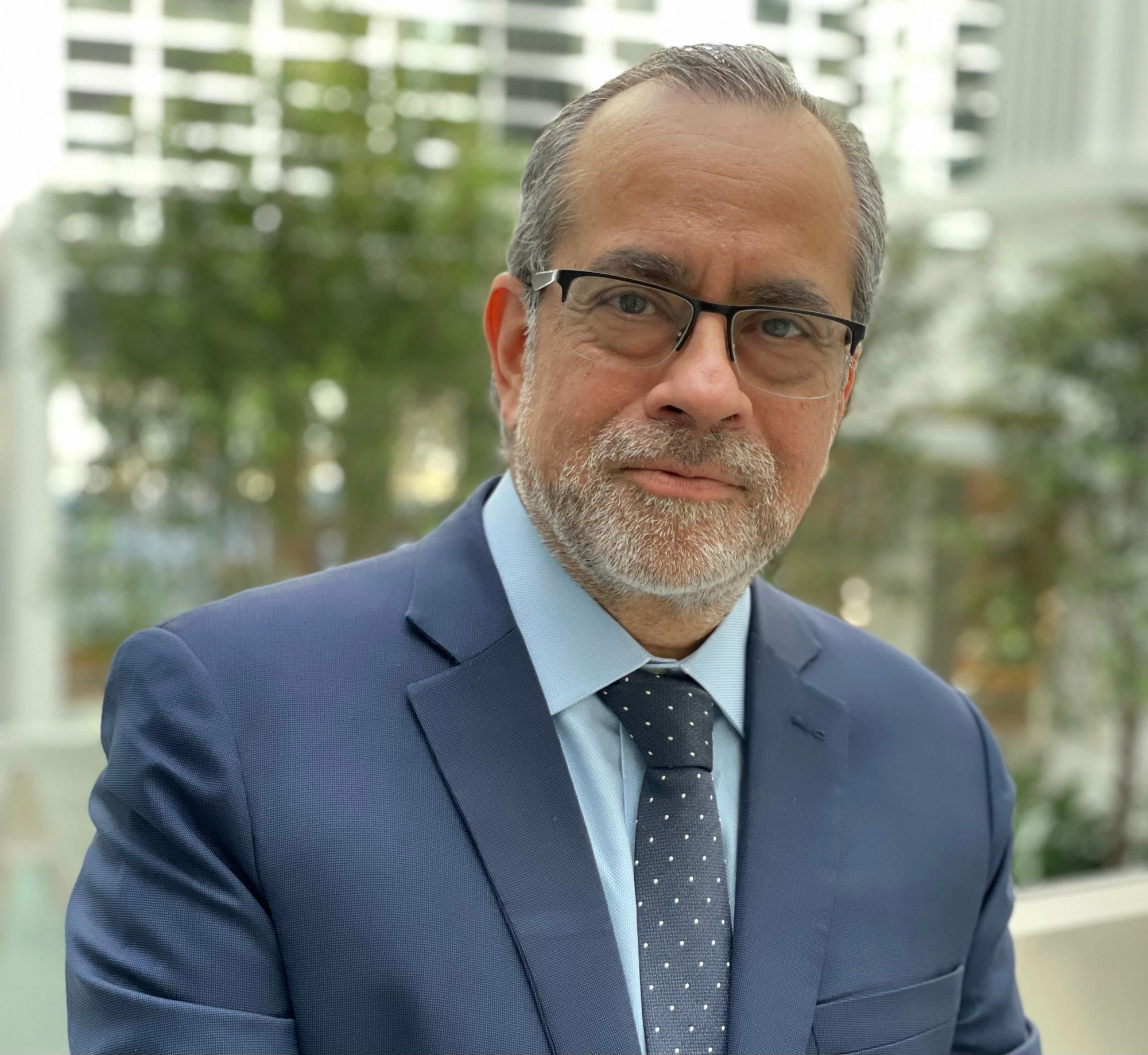
Human Development Director for Latin America and the Caribbean at the World Bank
Join the Conversation
- Share on mail
- comments added
Example sentences decent education
Definition of 'education' education.

Definition of 'decent' decent

COBUILD Collocations decent education
Browse alphabetically decent education
- decent chance
- decent chunk
- decent citizen
- decent education
- decent effort
- decent folk
- decent housing
- All ENGLISH words that begin with 'D'
Quick word challenge
Quiz Review
Score: 0 / 5
Wordle Helper

Scrabble Tools
On the first International Day of Education, let’s review the key role that education plays in promoting peace, development and growth, and examine the elements that make up a great education.

Education can change the world. By increasing access to quality education, the results can be transformational for an individual, a community and society at large. The value of investing in education is indisputable: it reduces inequality between women and men, improves economic development, promotes peace, and lifts people out of poverty.
Reducing poverty and education are inextricably linked: the more educated individuals are, the more chances they will have higher incomes and break the cycle of poverty. Statistics show that 420 million people would be lifted out of poverty with a secondary education. There is also research indicating that one additional school year can increase women’s earnings by up to 20%.
Here are 7 ingredients for a great education:
1. Start early
Early childhood care and education (ECCE) prepares children for learning and provides them with the skills to thrive later in life. What’s more, it’s a smart investment: US$1 invested in early education for the most disadvantaged children can generate up to US$17 in returns .
To date, GPE has invested US$180 million to support early learning in 30+ partner countries. Recognizing the benefits of ECCE, partner countries have launched initiatives aiming at improving early learning:
- Cambodia , with support from a GPE grant, improved access to early childhood education through the construction of preschools and teacher training. Between 2016 and 2018, the enrollment of 5-year-olds in selected districts increased from 56% to 68%.
- Nicaragua increased access to early childhood education by designing a unified curriculum that covers three levels of preschool education, by training teachers on the new curriculum, and by providing nearly 9,000 preschools with textbooks, school supplies and learning toys, with support from GPE. These efforts contributed to an increase in the number of children enrolled in preschool from 40% in 2013 to 50% in 2017.
2. Train teachers
We all know that teachers play a critical role in improving learning outcomes; but in one third of all countries, less than 75% of teachers are trained according to national standards. For GPE, supporting teachers and their professional development is a high priority: In 2017, 100% of grants to partner countries included support for teachers.
- With GPE’s support, the government of Kenya has trained 117,000 teachers and provided them with early grade math teaching guides. Additionally, an online tool for teacher appraisals has raised teaching standards by tracking classroom performance, professional knowledge, and attendance.
- GPE helped Zimbabwe strengthen teacher performance through the establishment of teacher professional standards, which identify what teachers should know and be able to do in the classroom. Also, GPE helped fund a teacher development information system database, to help the ministry get an accurate picture on the skill gaps in the teaching force.

3. Make education inclusive
Reaching all children, in particular the most vulnerable and marginalized, is a priority for GPE, which has provided US$440 million since 2012 to support inclusive education.
- GPE supported the government of Zanzibar to make its education system more inclusive by training hundreds of teachers on guidance and counseling, detecting special needs, and developing classroom skills for including children with disabilities. GPE also helped distribute glasses and hearing aids to vision- and hearing-impaired children; and more than 250,000 learning and teaching materials for inclusive education.
4. Leave no girl behind
Investing in girls’ education has a ripple effect that benefits their families, communities, and countries. GPE works with partners to put gender equality at the heart of national education systems:
- To enroll more girls in school, the government of Afghanistan , recruited, trained, and deployed female teachers to community-based schools in some of the country’s poorest districts. Thanks to these efforts, the rate of girls enrolling in primary school rose from 44% in 2002 to 84% in 2017.
- Balochistan ’s province in Pakistan has improved school enrollment and retention, especially for girls. Between 2015 and 2018, student retention in GPE-supported schools increased from 70% to 89%, and the number of girls enrolled in grades 1-5 increased from 7,500 to 35,000.
5. Provide good data
Education data are key to know which children are not in school or not learning. More than ever, GPE is helping partner countries improve their data collection and analysis:
- Sudan is strengthening its management and monitoring capacity through three systems: a teacher database; national learning assessments; and a rapid education management information system, which provides reliable information on primary and secondary education. These systems help Sudan better collect and analyze data for education planning and management.
6. Focus on learning
Despite the fact that more children than ever are in school, too many still don’t learn the basics: a waste of resources invested in education, and in human potential. GPE helps partner countries close the learning gap:
- With GPE support, Ethiopia conducted education reforms to improve the quality of teaching and learning in over 40,000 schools. A new curriculum was developed and over 200,000 teachers upgraded their qualifications. As a result, 44% of teachers in grades 1-4 were trained in 2013, up from just 3% in 2006.
- Guyana , with support from GPE, launched an early learning program that helped children in the most disadvantaged areas of the country develop the building blocks of lifelong learning. In 2018, almost 90% of children mastered reading and math skills compared to only 37% in 2016.

7. Strengthen the education system
GPE helps partner countries strengthen their national education systems to dramatically increase the number of children who are in school and learning. System strengthening at the core of the GPE model, and it’s what will make a long-lasting difference in the lives of millions of children around the world.
- GPE has supported Ghana with US$95.4 million in education grants over the past decade ensure that all children can go to school and get a quality education. The latest grant supported 75 of the most deprived districts and helped provide in-service training for teachers across all grades. It also provided small school grants to allow schools to be more flexible to buy necessary teaching and learning materials or make repairs. As a result, school attendance of students and teachers has improved significantly, enrollment rates shot up and transition rates from primary to lower-secondary school are increasing.
Since 2002, GPE has helped 77 million more children go to school. Of course, much more remains to be done.
On the International Day of Education, we commit to continuing our efforts to help partner countries ensure that no child is left behind.
Related blogs
May 20, 2024 by GPE Secretariat Transforming education in Cambodia Cambodia is committed to improving children’s learning and delivering quality education to all, by working with GPE and other partners. H.E. Lim Sothea, Director general of policy and planning at Cambodia’s...
April 24, 2024 by Rutendo Bamhare A dream school for inclusive education in Zimbabwe: The power of assistive devices In Zimbabwe, a program funded by GPE and partners is enhancing educational opportunities and results for children with disabilities.
April 23, 2024 by GPE Secretariat World Book Day: Celebrating the power of books to change lives Stories from Djibouti, Lao PDR, Nicaragua, Somalia, South Sudan and Zimbabwe showing how they are ensuring that more children have access to textbooks with support from GPE and other partners.
This a great recipe for 'cooking' a good education system, and little disagreement is perhaps possible on the ingredients. However, from my personal experience of living and working in a country (India) where the need for good quality education system is acute, and yet the political will and resource allocation seems to lag significantly behind, I believe that much of such recipes focus on strengthening the supply side of learning often not simultaneously emphasising two critical factors. One, the need to strengthen demand for good quality education that is more broad-based as opposed to being driven by top percentiles of population which leads to extremely skewed supply-side education systems, which in turn is detrimental to raising the national levels of educational attainments. Second, we should focus on making learning enjoyable, and not focussed exclusively at getting a job or a degree. Among other factors, the latter crucially depends on the quality and commitment of teachers who motivate students to learn. We need to build a national culture where becoming a teacher is a sought-after career aspiration among students, as opposed to being a residual category of employment mostly for non-achievers.
Good to see, but under item 1, welcome attention to ECCE should not mean starting to provide textbooks early in all cases. Better for policymakers to work with specialists to support good ECCE pedagogy rather than seeing textbooks as way of bestowing an aura of concern by government and agencies.
Amazing article!!! Thank you for changing the world for the better!
How does someone volunteer to teach or train teachers? I taught in the Peace Corps in Ghana and my wife worked at a teacher training center training teachers to teach English at the primary level. We both taught middle and high school in Zambia. I worked for USAID training teachers in an Egyptian school in Cairo to involve the students in the lessons. We would like to volunteer again. Teaching in the local language in Zambia makes so much sense!!!
One challenge in strengthening the education system is to incentivize female educators to offer programs that might fall outside of the formal curriculum. Do you have examples of such programs and of incentives that encouraged these "educational changemakers" to do more?
In reply to Default Subject by Constance Kane
Thanks constance. Can you clarify what you mean by "programs that might fall outside of the formal curriculum"?
Educational equity reveals that all kinds of people should get the same type of education in the educational system. Equity4Education shared some helpful tips with you. Follow this link https://equity4education.org/
As a Guyanese, and an educator, I am really impressed with the work being done by GPE in Guyana. My husband (Jamaican) and I have are considering returning to live in Guyana. So, two questions: (1) How can I be personally involved in the work that GPE is doing in Guyana? (2) Is GPE doing a work in Jamaica? I wait to hear from you. Thank you very much.
In reply to As a Guyanese, and an… by Shelly Thorpe
Thank you for your comment. GPE is not working with Jamaica at this time, based on the country's income level (GPE supports low-income countries). In Guyana, GPE currently supports the ministry of education to implement its COVID-19 response, with UNICEF as GPE grant agent. You can have a look at the grant documents on the Guyana page (click on "Key documents" at the top) to get further information on the type of activities that are being implemented and where you may be able to find entry points: https://www.globalpartnership.org/where-we-work/guyana
In Africa, the Gross Enrollment ratio for university and other tetiary institution is 9.8% (World Bank, 2022). In Countries Like Uganda, GER is 5.8% signifying that 94.2% of the children dropout of schools before schools bfore acquiring sufficient knowledge. The couse of school dropout is associated with extreme household poverty, poor curriculum which is not child-target to be inclusive in the way of accommodating both gifted and slow learners. The curriculum of primary in Uganda require alot from children hence exhausting/ fatiguing them as if they want children to understand everything in primary schools. To make matters warse they primary schools do not have science laboratory to introduce science practical lessons that would prepare them for secondary school chemistry and Biology. We better search for funding to start science laboratory in primary schools and even reduce the too much work for science
Leave a comment
Your email address will not be published. All fields are required.
- Global and entity tokens are replaced with their values. Browse available tokens.
- No HTML tags allowed.
- Lines and paragraphs break automatically.
- Web page addresses and email addresses turn into links automatically.
- Our Mission
What Is Education For?
Read an excerpt from a new book by Sir Ken Robinson and Kate Robinson, which calls for redesigning education for the future.
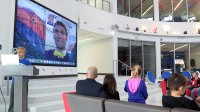
What is education for? As it happens, people differ sharply on this question. It is what is known as an “essentially contested concept.” Like “democracy” and “justice,” “education” means different things to different people. Various factors can contribute to a person’s understanding of the purpose of education, including their background and circumstances. It is also inflected by how they view related issues such as ethnicity, gender, and social class. Still, not having an agreed-upon definition of education doesn’t mean we can’t discuss it or do anything about it.
We just need to be clear on terms. There are a few terms that are often confused or used interchangeably—“learning,” “education,” “training,” and “school”—but there are important differences between them. Learning is the process of acquiring new skills and understanding. Education is an organized system of learning. Training is a type of education that is focused on learning specific skills. A school is a community of learners: a group that comes together to learn with and from each other. It is vital that we differentiate these terms: children love to learn, they do it naturally; many have a hard time with education, and some have big problems with school.
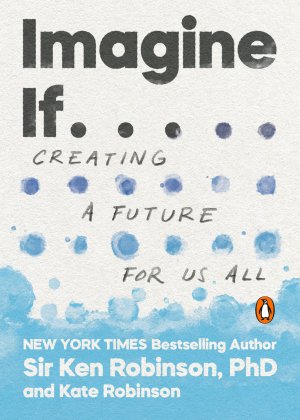
There are many assumptions of compulsory education. One is that young people need to know, understand, and be able to do certain things that they most likely would not if they were left to their own devices. What these things are and how best to ensure students learn them are complicated and often controversial issues. Another assumption is that compulsory education is a preparation for what will come afterward, like getting a good job or going on to higher education.
So, what does it mean to be educated now? Well, I believe that education should expand our consciousness, capabilities, sensitivities, and cultural understanding. It should enlarge our worldview. As we all live in two worlds—the world within you that exists only because you do, and the world around you—the core purpose of education is to enable students to understand both worlds. In today’s climate, there is also a new and urgent challenge: to provide forms of education that engage young people with the global-economic issues of environmental well-being.
This core purpose of education can be broken down into four basic purposes.
Education should enable young people to engage with the world within them as well as the world around them. In Western cultures, there is a firm distinction between the two worlds, between thinking and feeling, objectivity and subjectivity. This distinction is misguided. There is a deep correlation between our experience of the world around us and how we feel. As we explored in the previous chapters, all individuals have unique strengths and weaknesses, outlooks and personalities. Students do not come in standard physical shapes, nor do their abilities and personalities. They all have their own aptitudes and dispositions and different ways of understanding things. Education is therefore deeply personal. It is about cultivating the minds and hearts of living people. Engaging them as individuals is at the heart of raising achievement.
The Universal Declaration of Human Rights emphasizes that “All human beings are born free and equal in dignity and rights,” and that “Education shall be directed to the full development of the human personality and to the strengthening of respect for human rights and fundamental freedoms.” Many of the deepest problems in current systems of education result from losing sight of this basic principle.
Schools should enable students to understand their own cultures and to respect the diversity of others. There are various definitions of culture, but in this context the most appropriate is “the values and forms of behavior that characterize different social groups.” To put it more bluntly, it is “the way we do things around here.” Education is one of the ways that communities pass on their values from one generation to the next. For some, education is a way of preserving a culture against outside influences. For others, it is a way of promoting cultural tolerance. As the world becomes more crowded and connected, it is becoming more complex culturally. Living respectfully with diversity is not just an ethical choice, it is a practical imperative.
There should be three cultural priorities for schools: to help students understand their own cultures, to understand other cultures, and to promote a sense of cultural tolerance and coexistence. The lives of all communities can be hugely enriched by celebrating their own cultures and the practices and traditions of other cultures.
Education should enable students to become economically responsible and independent. This is one of the reasons governments take such a keen interest in education: they know that an educated workforce is essential to creating economic prosperity. Leaders of the Industrial Revolution knew that education was critical to creating the types of workforce they required, too. But the world of work has changed so profoundly since then, and continues to do so at an ever-quickening pace. We know that many of the jobs of previous decades are disappearing and being rapidly replaced by contemporary counterparts. It is almost impossible to predict the direction of advancing technologies, and where they will take us.
How can schools prepare students to navigate this ever-changing economic landscape? They must connect students with their unique talents and interests, dissolve the division between academic and vocational programs, and foster practical partnerships between schools and the world of work, so that young people can experience working environments as part of their education, not simply when it is time for them to enter the labor market.
Education should enable young people to become active and compassionate citizens. We live in densely woven social systems. The benefits we derive from them depend on our working together to sustain them. The empowerment of individuals has to be balanced by practicing the values and responsibilities of collective life, and of democracy in particular. Our freedoms in democratic societies are not automatic. They come from centuries of struggle against tyranny and autocracy and those who foment sectarianism, hatred, and fear. Those struggles are far from over. As John Dewey observed, “Democracy has to be born anew every generation, and education is its midwife.”
For a democratic society to function, it depends upon the majority of its people to be active within the democratic process. In many democracies, this is increasingly not the case. Schools should engage students in becoming active, and proactive, democratic participants. An academic civics course will scratch the surface, but to nurture a deeply rooted respect for democracy, it is essential to give young people real-life democratic experiences long before they come of age to vote.
Eight Core Competencies
The conventional curriculum is based on a collection of separate subjects. These are prioritized according to beliefs around the limited understanding of intelligence we discussed in the previous chapter, as well as what is deemed to be important later in life. The idea of “subjects” suggests that each subject, whether mathematics, science, art, or language, stands completely separate from all the other subjects. This is problematic. Mathematics, for example, is not defined only by propositional knowledge; it is a combination of types of knowledge, including concepts, processes, and methods as well as propositional knowledge. This is also true of science, art, and languages, and of all other subjects. It is therefore much more useful to focus on the concept of disciplines rather than subjects.
Disciplines are fluid; they constantly merge and collaborate. In focusing on disciplines rather than subjects we can also explore the concept of interdisciplinary learning. This is a much more holistic approach that mirrors real life more closely—it is rare that activities outside of school are as clearly segregated as conventional curriculums suggest. A journalist writing an article, for example, must be able to call upon skills of conversation, deductive reasoning, literacy, and social sciences. A surgeon must understand the academic concept of the patient’s condition, as well as the practical application of the appropriate procedure. At least, we would certainly hope this is the case should we find ourselves being wheeled into surgery.
The concept of disciplines brings us to a better starting point when planning the curriculum, which is to ask what students should know and be able to do as a result of their education. The four purposes above suggest eight core competencies that, if properly integrated into education, will equip students who leave school to engage in the economic, cultural, social, and personal challenges they will inevitably face in their lives. These competencies are curiosity, creativity, criticism, communication, collaboration, compassion, composure, and citizenship. Rather than be triggered by age, they should be interwoven from the beginning of a student’s educational journey and nurtured throughout.
From Imagine If: Creating a Future for Us All by Sir Ken Robinson, Ph.D and Kate Robinson, published by Penguin Books, an imprint of Penguin Publishing Group, a division of Penguin Random House, LLC. Copyright © 2022 by the Estate of Sir Kenneth Robinson and Kate Robinson.
Transforming lives through education
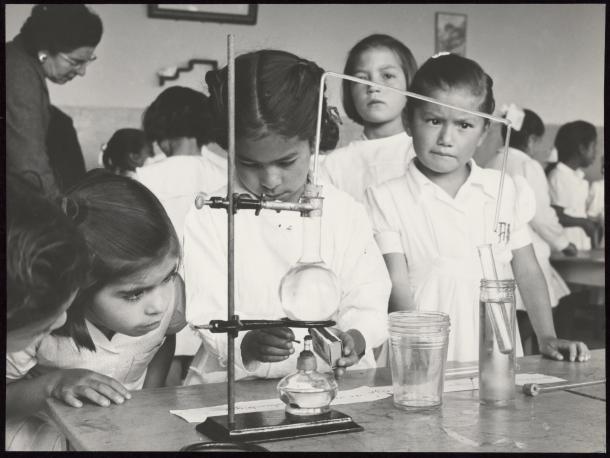
Transforming education to change our world
UNESCO provides global and regional leadership on all aspects of education from pre-school to higher education and throughout life. It works through its Member States and brings together governments, the private sector and civil society to strengthen education systems worldwide in order to deliver quality education for all. As a thought leader it publishes landmark reports and data for policy-makers, implements programmes on the ground from teacher training to emergency responses and establishes and monitors norms and standards for all to guide educational developments.
Right to education in a ruined world
Southern Italy, 1950. Three children are huddled around a makeshift desk made out of reclaimed wood, scribbling in their notebooks. The classroom has an earthen floor and roughly clad walls. The children’s clothes are ragged. They are wearing home-made slippers because shoes and the money to buy them are rare commodities in the war-ravaged south.
Although World War II ended five years earlier, the scars of conflict are still visible in this black and white photo from a report commissioned by UNESCO from legendary photojournalist David Seymour.
At the time when the photograph was taken, less than half of Italy’s population could read and write and just a third completed primary school. 70 years later, these children’s grandchildren enjoy an over 99% literacy rate. In the wake of the war, UNESCO led a major education campaign in Europe to respond to the education crisis, to rebuild links between people and to strengthen democracy and cultural identities after years of conflict. The emphasis then was on the fundamental learning skill of literacy.
Immediately after World War two UNESCO led a major education campaign in Europe to respond to the education crisis, fix and rebuild links between people and strengthen cultural identities after years of conflict. David Seymour’s images show the extent of the fight against illiteracy led by the post-war Italian government and non-governmental organisations backed by UNESCO.
Looking back at the deprived surroundings Seymour captured in his photo essay, one can see the extent of success. Seventy-one years later, those children’s grandchildren enjoy a 99.16 per cent literacy rate.
Similar programmes were held across the globe, for instance in devastated Korea where UNESCO led a major education textbook production programme in the 1950s. Several decades after, the former Secretary-General of the United Nations and Korean citizen Ban Ki-Moon expressed the importance of such a programme for the country's development:
The flowering of literacy
In a Korea devastated by war and where UNESCO led a major education textbook production programme in the 1950s, one student, Ban Ki-Moon, now Former Secretary-General of the United Nations, saw the world open up to him through the pages of a UNESCO textbook. Several decades after, he expressed the importance of such a programme for his country's development on the world stage.
Reaching the remote villages perched atop the Andes in Peru during the early 1960s wasn’t without its challenges for UNESCO’s technical assistance programme to bring literacy to disadvantaged communities. While Peru’s economy was experiencing a prolonged period of expansion, not all Peruvians were able to benefit from this growth which was limited to the industrialised coast. Instead, Andes communities were grappling with poverty, illiteracy and depopulation.
Today, the number of non-literate youths and adults around the world has decreased dramatically, while the global literacy rate for young people aged 15-24 years has reached 92 %. These astonishing successes reflect improved access to schooling for younger generations.
Photojournalist Paul Almasy has left us the poignant image of a barefoot older man while he’s deciphering a newspaper thanks to his newfound literacy skills.
The classroom at the UNESCO mission in Chinchera, in the Andean highlands of Peru, had allowed the old man to discover the world beyond his tiny village.
However, there are still huge obstacles to overcome. Data from the UNESCO Institute for Statistics shows that 617 million children and adolescents worldwide are not achieving minimum proficiency levels in reading and mathematics. Since the adoption of the Sustainable Development Goals in 2015 it is still the case that globally more than 450 million children - six out of 10 - have failed to gain basic literacy skills by the age of 10. And beyond literacy programmes, massive investments in skills for work and life, teacher training, and education policies are needed in a world that is changing ever faster.
Global priorities
Africa, home to the world’s youngest population, is not on track to achieve the targets of SDG 4. Sub-Saharan Africa alone is expected to account for 25% of the school-age population by 2030, up from 12% in 1990, yet it remains the region with the highest out-of-school rates. Girls are more likely to be permanently excluded from education than boys. The COVID-19 pandemic exacerbated inequalities, with 89% of learners not having access to computers and 82% lacking internet access to benefit from distance learning. The lack of trained teachers further jeopardizes progress towards SDG4: pre-pandemic only 64% of whom were trained at the primary level and 58% at the lower secondary level.
As part of its Priority Africa Flagship 2022 – 2029 , UNESCO has launched Campus Africa: Reinforcing Higher Education in Africa with the objective to build integrated, inclusive, and quality tertiary education systems and institutions, for the development of inclusive and equitable societies on the continent.
Gender
There are immense gender gaps when it comes to access, learning achievement and education, most often at the expense of girls and women. It is estimated that some 127 million girls are out of school around the world. For many girls and women around the world, the classroom remains an elusive, often forbidden space. UNESCO monitors the educational rights of girls and women around the world and shares information on the legal progress toward securing the right to education for women in all countries. Despite important progress in recent decades, the right to education is still far from being a reality for many girls and women. Discriminatory practices stand in the way of girls and women fully exercising their right to participate in, complete, and benefit from education. And while girls have difficulty with access, boys face increasing challenges, and particularly disengagement , from education at later stages. Globally only 88 men are enrolled in tertiary education for every 100 women. In 73 countries, fewer boys than girls are enrolled in upper-secondary education.
UNESCO's Her Atlas analyzes the legal frameworks of nearly 200 states to track which laws are enabling---or inhibiting---the right to education for girls and women. This interactive world map uses a color-coded scoring system to monitor 12 indicators of legal progress towards gender equality in the right to education.
Monitoring the right to education for girls and women
What makes me proud is that soon I will finish building a new house. I have already been able to buy a cow and I will soon be able to have another pond
Madagascar’s coastal Atsinanana region is known for its lush rainforests and fish breeding.
The country has a young population, but only one out of three children can complete primary education. Among those who are able to finish primary school, only 17% have minimum reading skills, while just a fifth of them have basic maths competencies. Once they leave school, children face a precarious labour market and unstable jobs, just like their parents.
Natacha Obienne is only 21 years old, but she is already in charge of a small fish farm, a career that is usually pursued by men. As one of the many out-of-school women in her area, she was able to set up her own business after vocational training taught her the basics of financial management and entrepreneurship, as well as the practicalities of breeding fish.
She understood that fish feeding depends on the temperature of the water. If it’s well managed, a higher number of fish is produced. ‘I immediately applied everything I learnt’ she says.
The classroom she attended changed the course of her life and she hopes other young people will follow in her footsteps.
I no longer depend on my parents and I am financially independent
She’s not alone. Around 3,000 youths in Madagascar have been trained since the start of the UNESCO-backed programme, some of whom have set up their own business and achieved financial independence. Education was the best way to ease people's emancipation.
Like Emma Claudia, 25, who after her vocational training started a restaurant with just a baking tray and a saucepan.
What does my family think? They are surprised and amazed by my evolution because I haven’t been able to complete my studies. I don’t have any school diplomas.
While Natacha and Emma Claudia have been able to transform their world through education, millions of children out of school around the world are still denied that dream.
Discrimination against girls remains widespread and nearly one billion adults, mostly women, are illiterate. The lack of qualified teachers and learning materials continues to be the reality in too many schools.
Challenging these obstacles is getting harder as the world grapples with the acceleration of climate change, the emergence of digitization and artificial intelligence, and the increasing exclusion and uncertainty brought by the Covid-19 pandemic.
We resumed school a while ago and it’s been stressful. We are trying to retrieve what we lost during quarantine, the worst thing about not being in school is the number of things you miss. Learning behind a screen and learning in person are incomparable.
Aicha is lucky to be able to continue her education. Her country has the highest rate of out-of-school children in the world – 10.5 million – and nearly two-thirds are women. To compound the problem, Nigeria’s northern states suffer from the violence that targets education.
In Russia, too, Alexander and his school friends had to cope with virtual learning and the lack of interactions.
All Russian students were moved to online studying. Needless to say, it was a rough year for all of us, several friends were struggling with depressive moods. They were missing their friends and teachers. So did I.
To protect their right to education during this unprecedented disruption and beyond, UNESCO has launched the Global Education Coalition , a platform for collaboration and exchange that brings together more than 175 countries from the UN family, civil society, academia and the private sector to ensure that learning never stops.
Building skills where they are most needed
Crouched over a pedal-powered sewing machine, Harikala Buda looks younger than her 30 years. Her slim fingers fold a cut of turquoise brocade before deftly pushing it under the needle mechanism.
Harikala lives in rural Nepal, where many villagers, particularly women, don’t have access to basic education. Women like Harikala rely on local community UNESCO-supported learning centres to receive literacy and tailoring skills. In a country where 32% of people over 15 are illiterate, particularly women and those living in rural areas, education is the only route to becoming self-reliant.
I have saved a small amount. My husband’s income goes towards running the house, mine is saved. We must save today to secure our children’s future
Having access to a classroom is the first step to creating a better world for the student, the student’s children and the student’s community. This is a lesson that matters a lot to
Kalasha Khadka Khatri, a 30-year-old Nepali mother. She grew up in a family of 21, with no option to go to school. Two of her children didn’t survive infancy because she was unable to pay for medical treatment. After acquiring sewing skills at her local community learning centre, Kalasha can now provide for her family.
Harikala and Kalasha were able to learn their skills through the support of the UNESCO’s Capacity Development for Education Programme (CapED), an initiative that operates in some 26 least-developed and fragile countries.
Reimagining the future of education
As the world slowly recovers after the COVID-19 crisis, 244 million children and youth worldwide are still out of school. And a 2022 survey by UNESCO, UNICEF, World Bank and OECD finds that one quarter of countries have yet to collect information on children who have and have not returned to school since the pandemic started.
Rebuilding how and where we learn requires policy advice, stronger education legislation, funds mobilisation, advocacy, targeted programme implementation based on sound analysis, statistics and global information sharing. Quality education also calls for the teaching of skills far beyond literacy and maths, including critical thinking against fake news in the digital era, living in harmony with nature and the ethics of artificial intelligence, to name a few of the critical skills needed in the 21st century.
UNESCO captured the debate around the futures of education in its landmark report from 2022 entitled Reimagining our futures together: A new social contract for education.
The Transformative Education Summit , that took place during the United Nations General Assembly in September 2022, as well as the Pre-Summit hosted by UNESCO to forge new approaches to education after the COVID-19 crisis, address the toughest bottlenecks to achieving SDG 4 and inspire young people to lead a global movement for education. World leaders committed to put education at the top of the political agenda. UNESCO has been mobilizing and consulting all stakeholders and partners to galvanize the transformation of every aspect of learning. UNESCO launched a number of key initiatives such as expanding public digital learning, making education responsive to the climate and environmental emergency, and improving access for crisis-affected children and youth.
The two children sitting at their makeshift desk in Italy in 1950 could not have imagined what a modern learning space might look like or how a modern curriculum or the tools and teacher training to deliver it might have been thought out and shaped to offer them the most from education. They could not have imagined the global drive to ensure that everyone was given a chance to learn throughout life. The only thing that has not changed since the photo was taken is the fact that education remains a fundamental and universal human right that can change the course of a life. To the millions still living in conditions of poverty, exclusion displacement and violence it opens a door to a better future.
Explore all the work and expertise of UNESCO in education
Related items.
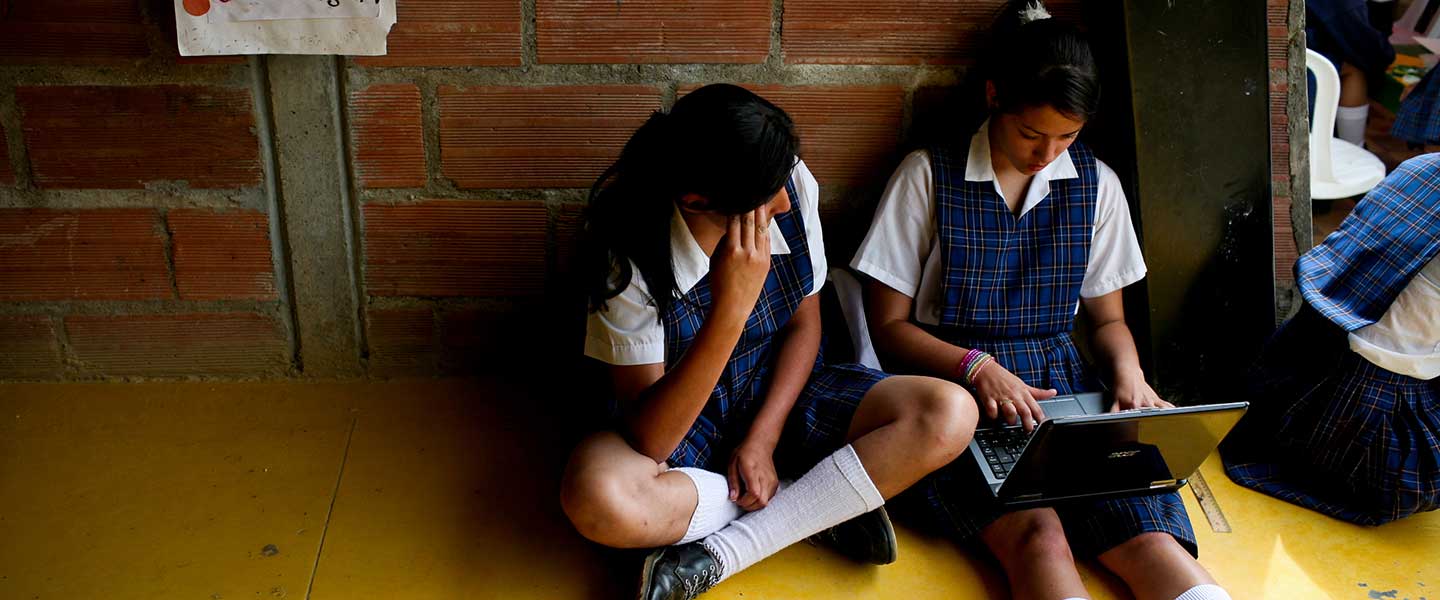
The World Bank Group is the largest financier of education in the developing world, working in 94 countries and committed to helping them reach SDG4: access to inclusive and equitable quality education and lifelong learning opportunities for all by 2030.
Education is a human right, a powerful driver of development, and one of the strongest instruments for reducing poverty and improving health, gender equality, peace, and stability. It delivers large, consistent returns in terms of income, and is the most important factor to ensure equity and inclusion.
For individuals, education promotes employment, earnings, health, and poverty reduction. Globally, there is a 9% increase in hourly earnings for every extra year of schooling . For societies, it drives long-term economic growth, spurs innovation, strengthens institutions, and fosters social cohesion. Education is further a powerful catalyst to climate action through widespread behavior change and skilling for green transitions.
Developing countries have made tremendous progress in getting children into the classroom and more children worldwide are now in school. But learning is not guaranteed, as the 2018 World Development Report (WDR) stressed.
Making smart and effective investments in people’s education is critical for developing the human capital that will end extreme poverty. At the core of this strategy is the need to tackle the learning crisis, put an end to Learning Poverty , and help youth acquire the advanced cognitive, socioemotional, technical and digital skills they need to succeed in today’s world.
In low- and middle-income countries, the share of children living in Learning Poverty (that is, the proportion of 10-year-old children that are unable to read and understand a short age-appropriate text) increased from 57% before the pandemic to an estimated 70% in 2022.
However, learning is in crisis. More than 70 million more people were pushed into poverty during the COVID pandemic, a billion children lost a year of school , and three years later the learning losses suffered have not been recouped . If a child cannot read with comprehension by age 10, they are unlikely to become fluent readers. They will fail to thrive later in school and will be unable to power their careers and economies once they leave school.
The effects of the pandemic are expected to be long-lasting. Analysis has already revealed deep losses, with international reading scores declining from 2016 to 2021 by more than a year of schooling. These losses may translate to a 0.68 percentage point in global GDP growth. The staggering effects of school closures reach beyond learning. This generation of children could lose a combined total of US$21 trillion in lifetime earnings in present value or the equivalent of 17% of today’s global GDP – a sharp rise from the 2021 estimate of a US$17 trillion loss.
Action is urgently needed now – business as usual will not suffice to heal the scars of the pandemic and will not accelerate progress enough to meet the ambitions of SDG 4. We are urging governments to implement ambitious and aggressive Learning Acceleration Programs to get children back to school, recover lost learning, and advance progress by building better, more equitable and resilient education systems.
Last Updated: Mar 25, 2024
The World Bank’s global education strategy is centered on ensuring learning happens – for everyone, everywhere. Our vision is to ensure that everyone can achieve her or his full potential with access to a quality education and lifelong learning. To reach this, we are helping countries build foundational skills like literacy, numeracy, and socioemotional skills – the building blocks for all other learning. From early childhood to tertiary education and beyond – we help children and youth acquire the skills they need to thrive in school, the labor market and throughout their lives.
Investing in the world’s most precious resource – people – is paramount to ending poverty on a livable planet. Our experience across more than 100 countries bears out this robust connection between human capital, quality of life, and economic growth: when countries strategically invest in people and the systems designed to protect and build human capital at scale, they unlock the wealth of nations and the potential of everyone.
Building on this, the World Bank supports resilient, equitable, and inclusive education systems that ensure learning happens for everyone. We do this by generating and disseminating evidence, ensuring alignment with policymaking processes, and bridging the gap between research and practice.
The World Bank is the largest source of external financing for education in developing countries, with a portfolio of about $26 billion in 94 countries including IBRD, IDA and Recipient-Executed Trust Funds. IDA operations comprise 62% of the education portfolio.
The investment in FCV settings has increased dramatically and now accounts for 26% of our portfolio.
World Bank projects reach at least 425 million students -one-third of students in low- and middle-income countries.
The World Bank’s Approach to Education
Five interrelated pillars of a well-functioning education system underpin the World Bank’s education policy approach:
- Learners are prepared and motivated to learn;
- Teachers are prepared, skilled, and motivated to facilitate learning and skills acquisition;
- Learning resources (including education technology) are available, relevant, and used to improve teaching and learning;
- Schools are safe and inclusive; and
- Education Systems are well-managed, with good implementation capacity and adequate financing.
The Bank is already helping governments design and implement cost-effective programs and tools to build these pillars.
Our Principles:
- We pursue systemic reform supported by political commitment to learning for all children.
- We focus on equity and inclusion through a progressive path toward achieving universal access to quality education, including children and young adults in fragile or conflict affected areas , those in marginalized and rural communities, girls and women , displaced populations, students with disabilities , and other vulnerable groups.
- We focus on results and use evidence to keep improving policy by using metrics to guide improvements.
- We want to ensure financial commitment commensurate with what is needed to provide basic services to all.
- We invest wisely in technology so that education systems embrace and learn to harness technology to support their learning objectives.
Laying the groundwork for the future
Country challenges vary, but there is a menu of options to build forward better, more resilient, and equitable education systems.
Countries are facing an education crisis that requires a two-pronged approach: first, supporting actions to recover lost time through remedial and accelerated learning; and, second, building on these investments for a more equitable, resilient, and effective system.
Recovering from the learning crisis must be a political priority, backed with adequate financing and the resolve to implement needed reforms. Domestic financing for education over the last two years has not kept pace with the need to recover and accelerate learning. Across low- and lower-middle-income countries, the average share of education in government budgets fell during the pandemic , and in 2022 it remained below 2019 levels.
The best chance for a better future is to invest in education and make sure each dollar is put toward improving learning. In a time of fiscal pressure, protecting spending that yields long-run gains – like spending on education – will maximize impact. We still need more and better funding for education. Closing the learning gap will require increasing the level, efficiency, and equity of education spending—spending smarter is an imperative.
- Education technology can be a powerful tool to implement these actions by supporting teachers, children, principals, and parents; expanding accessible digital learning platforms, including radio/ TV / Online learning resources; and using data to identify and help at-risk children, personalize learning, and improve service delivery.
Looking ahead
We must seize this opportunity to reimagine education in bold ways. Together, we can build forward better more equitable, effective, and resilient education systems for the world’s children and youth.
Accelerating Improvements
Supporting countries in establishing time-bound learning targets and a focused education investment plan, outlining actions and investments geared to achieve these goals.
Launched in 2020, the Accelerator Program works with a set of countries to channel investments in education and to learn from each other. The program coordinates efforts across partners to ensure that the countries in the program show improvements in foundational skills at scale over the next three to five years. These investment plans build on the collective work of multiple partners, and leverage the latest evidence on what works, and how best to plan for implementation. Countries such as Brazil (the state of Ceará) and Kenya have achieved dramatic reductions in learning poverty over the past decade at scale, providing useful lessons, even as they seek to build on their successes and address remaining and new challenges.
Universalizing Foundational Literacy
Readying children for the future by supporting acquisition of foundational skills – which are the gateway to other skills and subjects.
The Literacy Policy Package (LPP) consists of interventions focused specifically on promoting acquisition of reading proficiency in primary school. These include assuring political and technical commitment to making all children literate; ensuring effective literacy instruction by supporting teachers; providing quality, age-appropriate books; teaching children first in the language they speak and understand best; and fostering children’s oral language abilities and love of books and reading.
Advancing skills through TVET and Tertiary
Ensuring that individuals have access to quality education and training opportunities and supporting links to employment.
Tertiary education and skills systems are a driver of major development agendas, including human capital, climate change, youth and women’s empowerment, and jobs and economic transformation. A comprehensive skill set to succeed in the 21st century labor market consists of foundational and higher order skills, socio-emotional skills, specialized skills, and digital skills. Yet most countries continue to struggle in delivering on the promise of skills development.
The World Bank is supporting countries through efforts that address key challenges including improving access and completion, adaptability, quality, relevance, and efficiency of skills development programs. Our approach is via multiple channels including projects, global goods, as well as the Tertiary Education and Skills Program . Our recent reports including Building Better Formal TVET Systems and STEERing Tertiary Education provide a way forward for how to improve these critical systems.
Addressing Climate Change
Mainstreaming climate education and investing in green skills, research and innovation, and green infrastructure to spur climate action and foster better preparedness and resilience to climate shocks.
Our approach recognizes that education is critical for achieving effective, sustained climate action. At the same time, climate change is adversely impacting education outcomes. Investments in education can play a huge role in building climate resilience and advancing climate mitigation and adaptation. Climate change education gives young people greater awareness of climate risks and more access to tools and solutions for addressing these risks and managing related shocks. Technical and vocational education and training can also accelerate a green economic transformation by fostering green skills and innovation. Greening education infrastructure can help mitigate the impact of heat, pollution, and extreme weather on learning, while helping address climate change.
Examples of this work are projects in Nigeria (life skills training for adolescent girls), Vietnam (fostering relevant scientific research) , and Bangladesh (constructing and retrofitting schools to serve as cyclone shelters).
Strengthening Measurement Systems
Enabling countries to gather and evaluate information on learning and its drivers more efficiently and effectively.
The World Bank supports initiatives to help countries effectively build and strengthen their measurement systems to facilitate evidence-based decision-making. Examples of this work include:
(1) The Global Education Policy Dashboard (GEPD) : This tool offers a strong basis for identifying priorities for investment and policy reforms that are suited to each country context by focusing on the three dimensions of practices, policies, and politics.
- Highlights gaps between what the evidence suggests is effective in promoting learning and what is happening in practice in each system; and
- Allows governments to track progress as they act to close the gaps.
The GEPD has been implemented in 13 education systems already – Peru, Rwanda, Jordan, Ethiopia, Madagascar, Mozambique, Islamabad, Khyber Pakhtunkhwa, Sierra Leone, Niger, Gabon, Jordan and Chad – with more expected by the end of 2024.
(2) Learning Assessment Platform (LeAP) : LeAP is a one-stop shop for knowledge, capacity-building tools, support for policy dialogue, and technical staff expertise to support student achievement measurement and national assessments for better learning.
Supporting Successful Teachers
Helping systems develop the right selection, incentives, and support to the professional development of teachers.
Currently, the World Bank Education Global Practice has over 160 active projects supporting over 18 million teachers worldwide, about a third of the teacher population in low- and middle-income countries. In 12 countries alone, these projects cover 16 million teachers, including all primary school teachers in Ethiopia and Turkey, and over 80% in Bangladesh, Pakistan, and Vietnam.
A World Bank-developed classroom observation tool, Teach, was designed to capture the quality of teaching in low- and middle-income countries. It is now 3.6 million students.
While Teach helps identify patterns in teacher performance, Coach leverages these insights to support teachers to improve their teaching practice through hands-on in-service teacher professional development (TPD).
Our recent report on Making Teacher Policy Work proposes a practical framework to uncover the black box of effective teacher policy and discusses the factors that enable their scalability and sustainability.
Supporting Education Finance Systems
Strengthening country financing systems to mobilize resources for education and make better use of their investments in education.
Our approach is to bring together multi-sectoral expertise to engage with ministries of education and finance and other stakeholders to develop and implement effective and efficient public financial management systems; build capacity to monitor and evaluate education spending, identify financing bottlenecks, and develop interventions to strengthen financing systems; build the evidence base on global spending patterns and the magnitude and causes of spending inefficiencies; and develop diagnostic tools as public goods to support country efforts.
Working in Fragile, Conflict, and Violent (FCV) Contexts
The massive and growing global challenge of having so many children living in conflict and violent situations requires a response at the same scale and scope. Our education engagement in the Fragility, Conflict and Violence (FCV) context, which stands at US$5.35 billion, has grown rapidly in recent years, reflecting the ever-increasing importance of the FCV agenda in education. Indeed, these projects now account for more than 25% of the World Bank education portfolio.
Education is crucial to minimizing the effects of fragility and displacement on the welfare of youth and children in the short-term and preventing the emergence of violent conflict in the long-term.
Support to Countries Throughout the Education Cycle
Our support to countries covers the entire learning cycle, to help shape resilient, equitable, and inclusive education systems that ensure learning happens for everyone.
The ongoing Supporting Egypt Education Reform project , 2018-2025, supports transformational reforms of the Egyptian education system, by improving teaching and learning conditions in public schools. The World Bank has invested $500 million in the project focused on increasing access to quality kindergarten, enhancing the capacity of teachers and education leaders, developing a reliable student assessment system, and introducing the use of modern technology for teaching and learning. Specifically, the share of Egyptian 10-year-old students, who could read and comprehend at the global minimum proficiency level, increased to 45 percent in 2021.
In Nigeria , the $75 million Edo Basic Education Sector and Skills Transformation (EdoBESST) project, running from 2020-2024, is focused on improving teaching and learning in basic education. Under the project, which covers 97 percent of schools in the state, there is a strong focus on incorporating digital technologies for teachers. They were equipped with handheld tablets with structured lesson plans for their classes. Their coaches use classroom observation tools to provide individualized feedback. Teacher absence has reduced drastically because of the initiative. Over 16,000 teachers were trained through the project, and the introduction of technology has also benefited students.
Through the $235 million School Sector Development Program in Nepal (2017-2022), the number of children staying in school until Grade 12 nearly tripled, and the number of out-of-school children fell by almost seven percent. During the pandemic, innovative approaches were needed to continue education. Mobile phone penetration is high in the country. More than four in five households in Nepal have mobile phones. The project supported an educational service that made it possible for children with phones to connect to local radio that broadcast learning programs.
From 2017-2023, the $50 million Strengthening of State Universities in Chile project has made strides to improve quality and equity at state universities. The project helped reduce dropout: the third-year dropout rate fell by almost 10 percent from 2018-2022, keeping more students in school.
The World Bank’s first Program-for-Results financing in education was through a $202 million project in Tanzania , that ran from 2013-2021. The project linked funding to results and aimed to improve education quality. It helped build capacity, and enhanced effectiveness and efficiency in the education sector. Through the project, learning outcomes significantly improved alongside an unprecedented expansion of access to education for children in Tanzania. From 2013-2019, an additional 1.8 million students enrolled in primary schools. In 2019, the average reading speed for Grade 2 students rose to 22.3 words per minute, up from 17.3 in 2017. The project laid the foundation for the ongoing $500 million BOOST project , which supports over 12 million children to enroll early, develop strong foundational skills, and complete a quality education.
The $40 million Cambodia Secondary Education Improvement project , which ran from 2017-2022, focused on strengthening school-based management, upgrading teacher qualifications, and building classrooms in Cambodia, to improve learning outcomes, and reduce student dropout at the secondary school level. The project has directly benefited almost 70,000 students in 100 target schools, and approximately 2,000 teachers and 600 school administrators received training.
The World Bank is co-financing the $152.80 million Yemen Restoring Education and Learning Emergency project , running from 2020-2024, which is implemented through UNICEF, WFP, and Save the Children. It is helping to maintain access to basic education for many students, improve learning conditions in schools, and is working to strengthen overall education sector capacity. In the time of crisis, the project is supporting teacher payments and teacher training, school meals, school infrastructure development, and the distribution of learning materials and school supplies. To date, almost 600,000 students have benefited from these interventions.
The $87 million Providing an Education of Quality in Haiti project supported approximately 380 schools in the Southern region of Haiti from 2016-2023. Despite a highly challenging context of political instability and recurrent natural disasters, the project successfully supported access to education for students. The project provided textbooks, fresh meals, and teacher training support to 70,000 students, 3,000 teachers, and 300 school directors. It gave tuition waivers to 35,000 students in 118 non-public schools. The project also repaired 19 national schools damaged by the 2021 earthquake, which gave 5,500 students safe access to their schools again.
In 2013, just 5% of the poorest households in Uzbekistan had children enrolled in preschools. Thanks to the Improving Pre-Primary and General Secondary Education Project , by July 2019, around 100,000 children will have benefitted from the half-day program in 2,420 rural kindergartens, comprising around 49% of all preschool educational institutions, or over 90% of rural kindergartens in the country.
In addition to working closely with governments in our client countries, the World Bank also works at the global, regional, and local levels with a range of technical partners, including foundations, non-profit organizations, bilaterals, and other multilateral organizations. Some examples of our most recent global partnerships include:
UNICEF, UNESCO, FCDO, USAID, Bill & Melinda Gates Foundation: Coalition for Foundational Learning
The World Bank is working closely with UNICEF, UNESCO, FCDO, USAID, and the Bill & Melinda Gates Foundation as the Coalition for Foundational Learning to advocate and provide technical support to ensure foundational learning. The World Bank works with these partners to promote and endorse the Commitment to Action on Foundational Learning , a global network of countries committed to halving the global share of children unable to read and understand a simple text by age 10 by 2030.
Australian Aid, Bernard van Leer Foundation, Bill & Melinda Gates Foundation, Canada, Echida Giving, FCDO, German Cooperation, William & Flora Hewlett Foundation, Conrad Hilton Foundation, LEGO Foundation, Porticus, USAID: Early Learning Partnership
The Early Learning Partnership (ELP) is a multi-donor trust fund, housed at the World Bank. ELP leverages World Bank strengths—a global presence, access to policymakers and strong technical analysis—to improve early learning opportunities and outcomes for young children around the world.
We help World Bank teams and countries get the information they need to make the case to invest in Early Childhood Development (ECD), design effective policies and deliver impactful programs. At the country level, ELP grants provide teams with resources for early seed investments that can generate large financial commitments through World Bank finance and government resources. At the global level, ELP research and special initiatives work to fill knowledge gaps, build capacity and generate public goods.
UNESCO, UNICEF: Learning Data Compact
UNESCO, UNICEF, and the World Bank have joined forces to close the learning data gaps that still exist and that preclude many countries from monitoring the quality of their education systems and assessing if their students are learning. The three organizations have agreed to a Learning Data Compact , a commitment to ensure that all countries, especially low-income countries, have at least one quality measure of learning by 2025, supporting coordinated efforts to strengthen national assessment systems.
UNESCO Institute for Statistics (UIS): Learning Poverty Indicator
Aimed at measuring and urging attention to foundational literacy as a prerequisite to achieve SDG4, this partnership was launched in 2019 to help countries strengthen their learning assessment systems, better monitor what students are learning in internationally comparable ways and improve the breadth and quality of global data on education.
FCDO, Bill & Melinda Gates Foundation: EdTech Hub
Supported by the UK government’s Foreign, Commonwealth & Development Office (FCDO), in partnership with the Bill & Melinda Gates Foundation, the EdTech Hub is aimed at improving the quality of ed-tech investments. The Hub launched a rapid response Helpdesk service to provide just-in-time advisory support to 70 low- and middle-income countries planning education technology and remote learning initiatives.
MasterCard Foundation
Our Tertiary Education and Skills global program, launched with support from the Mastercard Foundation, aims to prepare youth and adults for the future of work and society by improving access to relevant, quality, equitable reskilling and post-secondary education opportunities. It is designed to reframe, reform, and rebuild tertiary education and skills systems for the digital and green transformation.
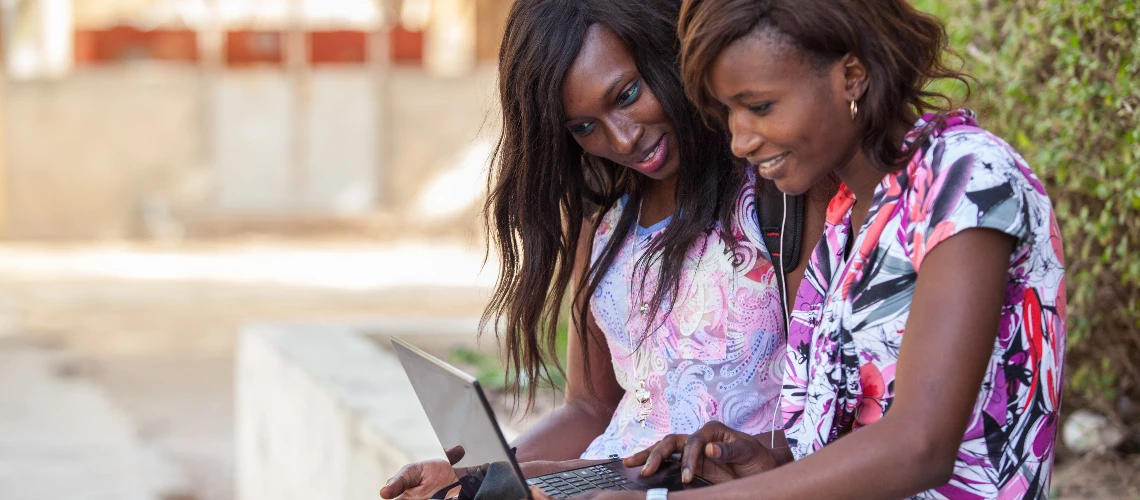
Bridging the AI divide: Breaking down barriers to ensure women’s leadership and participation in the Fifth Industrial Revolution
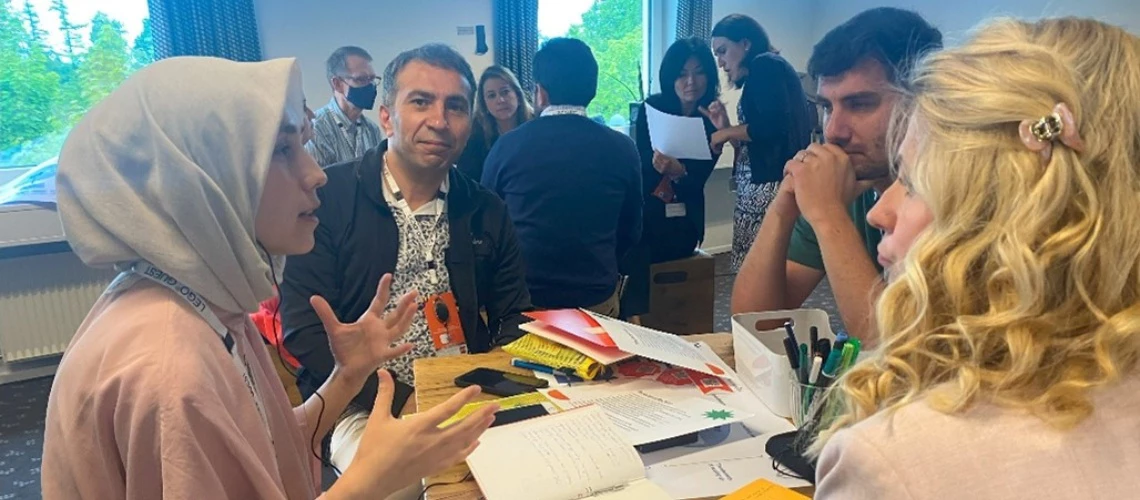
Common challenges and tailored solutions: How policymakers are strengthening early learning systems across the world
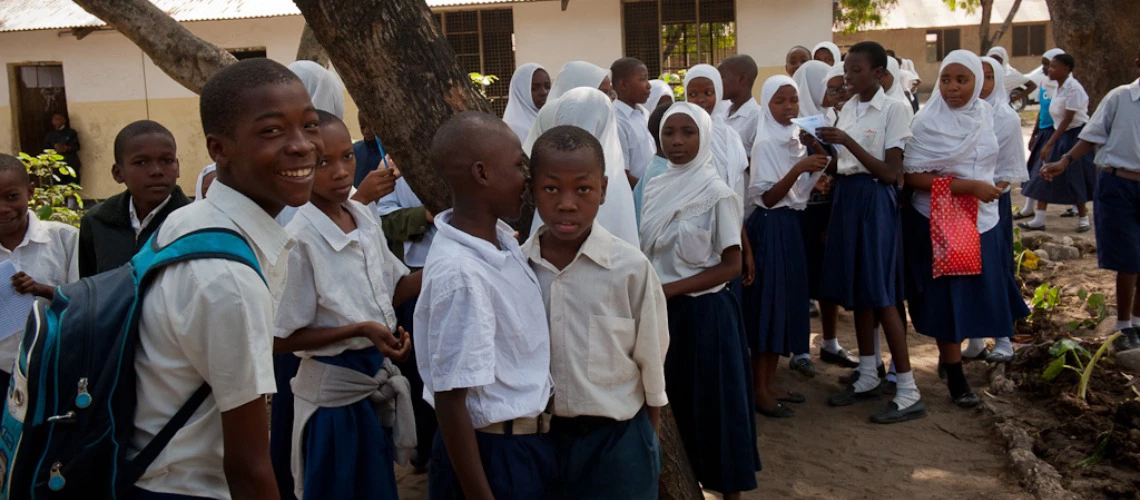
Compulsory education boosts learning outcomes and climate action
Areas of focus.
Data & Measurement
Early Childhood Development
Financing Education
Foundational Learning
Fragile, Conflict & Violent Contexts
Girls’ Education
Inclusive Education
Skills Development
Technology (EdTech)
Tertiary Education
Initiatives
- Show More +
- Tertiary Education and Skills Program
- Service Delivery Indicators
- Evoke: Transforming education to empower youth
- Global Education Policy Dashboard
- Global Education Evidence Advisory Panel
- Show Less -
Collapse and Recovery: How the COVID-19 Pandemic Eroded Human Capital and What to Do About It
BROCHURES & FACT SHEETS
Flyer: Education Factsheet - May 2024
Publication: Realizing Education's Promise: A World Bank Retrospective – August 2023
Flyer: Education and Climate Change - November 2022
Brochure: Learning Losses - October 2022
STAY CONNECTED
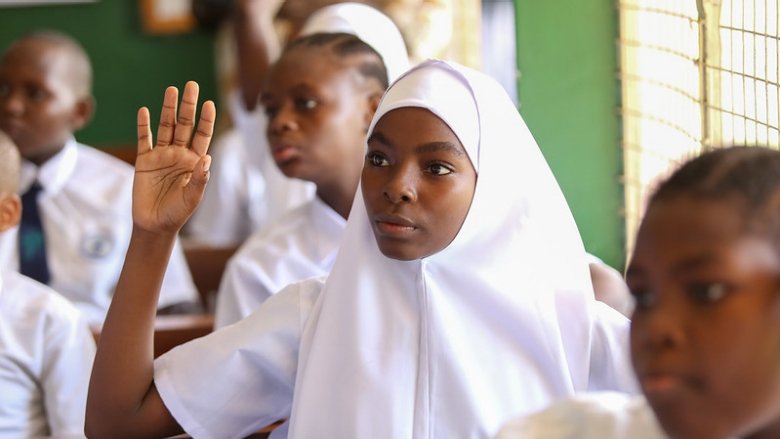
Human Development Topics
Around the bank group.
Find out what the Bank Group's branches are doing in education
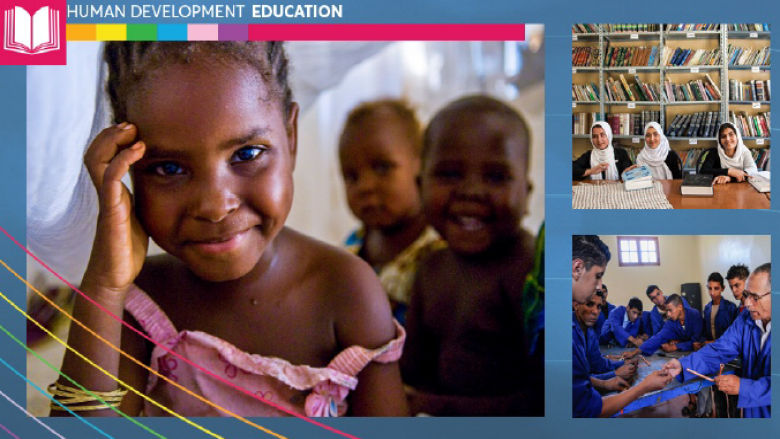
Global Education Newsletter - April 2024
What's happening in the World Bank Education Global Practice? Read to learn more.
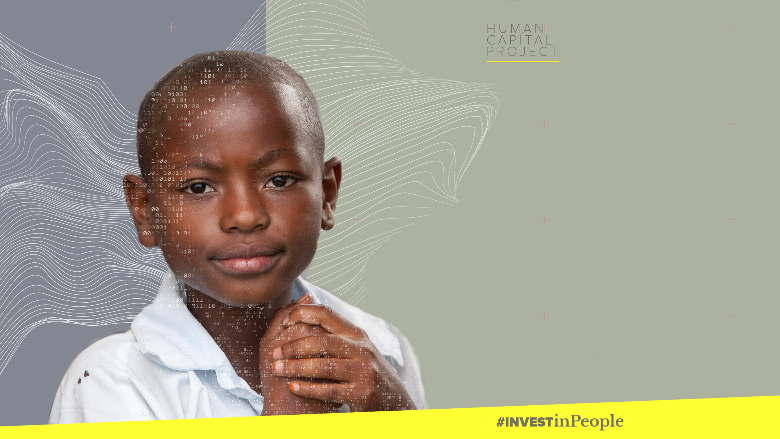
Human Capital Project
The Human Capital Project is a global effort to accelerate more and better investments in people for greater equity and economic growth.
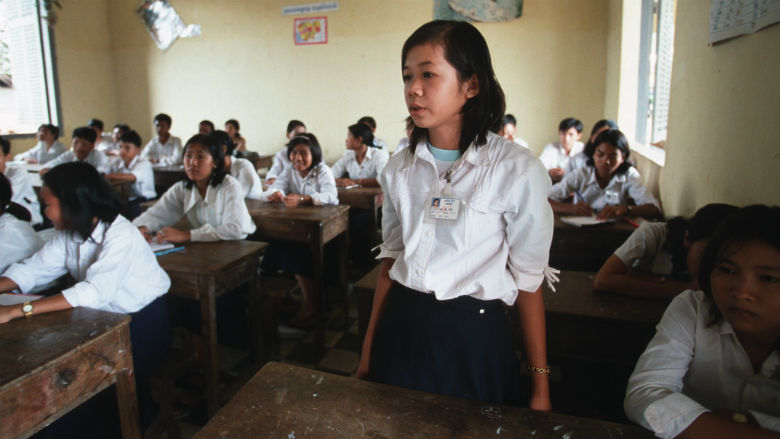
Impact Evaluations
Research that measures the impact of education policies to improve education in low and middle income countries.
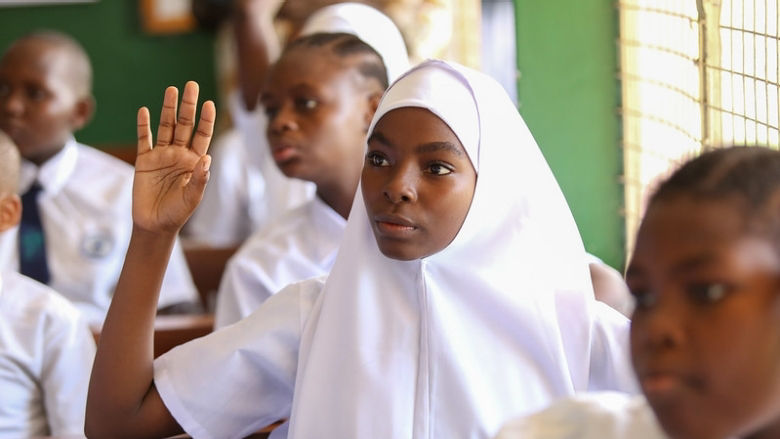
Education Videos
Watch our latest videos featuring our projects across the world
Additional Resources
Education Finance
Higher Education
Digital Technologies
Education Data & Measurement
Education in Fragile, Conflict & Violence Contexts
This site uses cookies to optimize functionality and give you the best possible experience. If you continue to navigate this website beyond this page, cookies will be placed on your browser. To learn more about cookies, click here .

Education: The Great Equaliser or a Divider?
How "equal opportunities for all" might be unfair from the first day of school..
Updated May 16, 2024 | Reviewed by Michelle Quirk
- Why Education Is Important
- Find a Child Therapist
- Children who perform better at school go on to have greater life success.
- Children from disadvantaged backgrounds lag behind in key skills and abilities at school entry.
- These children also perform worse in later school than those from advantaged backgrounds.
- Socioeconomic barriers prevent children from utilising educational opportunities equally.

Horace Mann, a pioneer of American public schools in the 19th century, famously called education the “great equalizer.” What he meant was that education could be a force to even out the disparities between people. Providing high-quality free education to all children regardless of their origins was a means by which those without privilege or generational wealth could experience hope of equal footing.
In meritocratic societies, like Britain, education policy typically focuses on creating " equal learning opportunities," where all children are taught the same curriculum, at the same pace, by the same methods, regardless of their differences in ability, skills, and interests. This is different from " equity of educational outcomes" where, in theory, all children, regardless of their differing abilities, are able to achieve the same academic results. One way to achieve equity in education is by allocating greater support and resources to the children who struggle most in school.
But, if children who perform poorly at the beginning of school continue to struggle throughout school, is education really a great equaliser, or is it possibly more of a great divider?
The notion that schools increase, rather than reduce, children’s differences in life chances appears correct when we consider that children who earn better grades go on to have greater life success. For example, in a U.K. representative sample, students who excelled in their exams were much more likely to go on to university and achieve a first-class degree, whereas less than 10 percent of students who struggled to pass their exams went on to university.

Children enter school on unequal footing.
Before children even enter education, their life experiences differ substantially. Children’s family background (e.g., how educated their parents are or how much household income their family has at their disposal) is a powerful predictor of their school readiness —a combination of children’s school-entry skills, attention skills, and socioemotional skills. Children from more advantaged family backgrounds tend to be better prepared for school (they have higher school readiness) than kids from underresourced families.
We know that preschool education helps better prepare children for school, but for some families the costs of preschool are simply too high to pay. The average cost of part-time preschool (25 hours) for children under the age of 2 years in 2024 is £8,194 . In the United Kingdom, families do not gain access to any form of free childcare until children are two years old, when families receive 15 hours free, increasing to 30 hours after the age of three. This is reflected in the proportion of families who utilise preschool childcare when kids are 0 to 4 years old. Three-quarters of upper- and middle-class families send their children to preschool, compared to only half of low-income families.
According to teachers , 39 percent of children enter reception class unable to hold a pencil, 36 percent lack basic numeracy skills, and 25 percent struggle with basic language.
As children’s language develops, they begin building the foundations for literacy, reading, and writing, which are key to doing well in class. But we know children arrive at school with very different language abilities: Some show signs of developmental language disorders, some struggle with reading because they are affected by dyslexia, and some have not been much exposed within their family homes to the language that is typical in school settings . That means that some children are better prepared than others for school. These children are more likely to participate in classroom discussions and to enjoy doing their homework, thereby gaining richer learning experiences than other kids.
Performance remains unequal throughout school.
Children from advantaged family backgrounds do better in exams when they start school and continue to do so as they go through the primary and secondary school years. The differences in children’s school performance actually magnify and get larger as children grow up.
The relationship between family background and school performance has remained stable for almost a century in Britain, with children from more advantaged family backgrounds consistently performing better. This finding suggests that current policies aimed at bridging the gap between children from advantaged and disadvantaged homes have been mostly unsuccessful.
We must therefore ask ourselves whether the current education system, equal opportunities for all, is actually unfair from the very beginning.
Socioeconomic barriers prevent children from utilising opportunities equally.
Creating equal learning opportunities for all students will not produce fair education systems if students differ in their abilities to utilise these opportunities. To be fair to all, education systems need to adapt to students’ differential learning needs and backgrounds, offering additional help and support to those who need it, and acknowledging that children enter education on very different footing.

In the United Kingdom, the pupil premium reflects this idea: Schools receive additional funding to afford extra educational resources to help students from disadvantaged backgrounds overcome their disadvantages in education. Ofsted has reported that pupil premium has made a positive impact across many U.K. schools, with gaps in attainment between those pupils eligible for free school meals and those who are not slowly closing.
How do we achieve both equity and equality?
Some suggest that aiming for educational adequacy is what is most fair, whereby some inequality in opportunities is acceptable, and at-risk children should be provided with additional support and resources. In theory, this would allow all students to develop the basic competencies necessary to live rich, meaningful, and fulfilling lives. But what society deems as the " basic competencies" remains unanswered.
What we do know is that “ equal societies almost always do better ,” and ensuring all children have an equal chance to benefit from the opportunities schooling offers and achieve their full potential regardless of barriers needs to be the primary aim of educational policy.

Researchers at the Hungry Mind Lab at the University of York study the causes and consequences of individual differences in cognitive and social-emotional development across the life course.
- Find a Therapist
- Find a Treatment Center
- Find a Psychiatrist
- Find a Support Group
- Find Online Therapy
- United States
- Brooklyn, NY
- Chicago, IL
- Houston, TX
- Los Angeles, CA
- New York, NY
- Portland, OR
- San Diego, CA
- San Francisco, CA
- Seattle, WA
- Washington, DC
- Asperger's
- Bipolar Disorder
- Chronic Pain
- Eating Disorders
- Passive Aggression
- Personality
- Goal Setting
- Positive Psychology
- Stopping Smoking
- Low Sexual Desire
- Relationships
- Child Development
- Self Tests NEW
- Therapy Center
- Diagnosis Dictionary
- Types of Therapy

At any moment, someone’s aggravating behavior or our own bad luck can set us off on an emotional spiral that threatens to derail our entire day. Here’s how we can face our triggers with less reactivity so that we can get on with our lives.
- Emotional Intelligence
- Gaslighting
- Affective Forecasting
- Neuroscience
- Cambridge Dictionary +Plus
Meaning of decent in English
Your browser doesn't support HTML5 audio
- good She is a good woman who goes out of her way to help others.
- virtuous I believe that humans are, despite their flaws, capable of virtuous conduct.
- righteous He refused to stray from the righteous path.
- honest He was a hardworking, honest family man who was only trying to do his duty.
- upstanding I’m sure most of them are honest, upstanding members of society.
- acceptable Your essay was acceptable, but I think you could have done better.
- reasonable They have a reasonable chance of winning.
- adequate The law provides adequate compensation for robbery victims.
- passable I speak passable Spanish.
- will do It's not perfect, but it'll do.
- All I need is a roof over my head and a decent meal .
- He seemed like a decent sort of a fellow .
- The law obliges companies to pay decent wages to their employees .
- I haven't had a decent night's sleep in years .
- The makers of the film will want to see a decent return on their investment .
- acceptability
- convenience
- conveniently
- correctness
- eligibility
- re-eligible
- respectability
You can also find related words, phrases, and synonyms in the topics:
Related word
Decent | american dictionary, examples of decent, translations of decent.
Get a quick, free translation!

Word of the Day
to fasten the belt that keeps you in your seat in a car or a plane

Searching out and tracking down: talking about finding or discovering things

Learn more with +Plus
- Recent and Recommended {{#preferredDictionaries}} {{name}} {{/preferredDictionaries}}
- Definitions Clear explanations of natural written and spoken English English Learner’s Dictionary Essential British English Essential American English
- Grammar and thesaurus Usage explanations of natural written and spoken English Grammar Thesaurus
- Pronunciation British and American pronunciations with audio English Pronunciation
- English–Chinese (Simplified) Chinese (Simplified)–English
- English–Chinese (Traditional) Chinese (Traditional)–English
- English–Dutch Dutch–English
- English–French French–English
- English–German German–English
- English–Indonesian Indonesian–English
- English–Italian Italian–English
- English–Japanese Japanese–English
- English–Norwegian Norwegian–English
- English–Polish Polish–English
- English–Portuguese Portuguese–English
- English–Spanish Spanish–English
- English–Swedish Swedish–English
- Dictionary +Plus Word Lists
- English Adjective
- Translations
- All translations
To add decent to a word list please sign up or log in.
Add decent to one of your lists below, or create a new one.
{{message}}
Something went wrong.
There was a problem sending your report.
Teen walks at graduation after completing doctoral degree at 17
Dorothy Jean Tillman II was 10 when she entered college as a freshman.
A teenager from Chicago walked in her graduation ceremony this month after earning her doctoral degree at 17.
Dorothy Jean Tillman II told " Good Morning America " that she was homeschooled in her early years before entering college at age 10.
In 2020, she said she earned a Master of Science degree, and then, one year later, at age 15, was accepted into the Doctorate of Behavioral Health Management program at Arizona State University.
In December 2023, at 17, Tillman successfully defended her dissertation to earn her doctoral degree in integrated behavioral health from ASU's College of Health Solutions.
On May 6, she walked at ASU's spring commencement ceremony.

Tillman told "GMA" she has always held education in such high regard in part due to her family's background.
"People in my life like my grandmother, who was part of the Civil Rights movement, she of course harped on the importance of education and consistently learning something always," Tillman said. "But the way I always held education so high on my own, aside from being raised that way, was finding different things to be educated about."
She continued, "I feel like that urge to learn something new just never didn't exist for me."
Teen who battled leukemia and homelessness as a child graduates college at 18
Dr. Lesley Manson, a clinical associate professor at ASU, told "GMA" that Tillman is the youngest person in school history to earn a doctoral degree in integrated behavioral health.
Manson said she oversaw Tillman's dissertation for the doctoral program offered through ASU Online.
Similar Stories

A Chicago teen entered college at 10. At 17, she earned a doctorate from Arizona State
- May 14, 1:59 PM

Moms of Miss USA, Miss Teen USA speak out
- May 14, 9:43 AM

Steve Buscemi OK after recent assault in NYC
- May 13, 11:00 AM
During her studies, Tillman wrote a journal article of her dissertation and completed an internship at a university student health center, according to Manson.
"She really led change and worked on different forms of management to really reduce healthcare stigma and improve that student population there to be able to enter and accept student health services," she said of Tillman. "It was wonderful to see her and help her navigate some of those personal and professional interactions and grow through those experiences."
Manson described Tillman as an "inquisitive" and "innovative" student, and emphasized just how rare it is to accomplish what she has so far.
"It's a wonderful celebration ... but this is still something so rare and unique," she said. "She has innovative ideas and motivation, which is wonderful, and truly, I think what is inspiring is that she embodies that meaning of being a true leader."

Manson said she hopes Tillman continues to inspire people with her love of learning, saying, "That curiosity is always there, and I think all learners come with that, but it's great to be able to see it in someone so young as well."
Her inspiration and how she gives back to community
Tillman said her own journey wouldn't be possible without the support of her mom, who she said is one of her biggest motivators.
"Seeing my mother consistently work so hard to continuously uphold our family's legacy, and be that person that everyone was able to go to, if they needed anything ... always seeing [her] like [a] 'wonder woman' definitely made me want to grow up [into] an accomplished person," she said.

An advocate for education, Tillman is also the founder and CEO of a leadership institute that emphasizes the arts and STEM.
"I feel like adding art and putting a focus on it throughout science, technology, engineering and math makes the kids excited to learn all those things," she said. "And it opens them up to all of the possibilities and all the knowledge provided in that area of just STEM."
'Super dad' graduates with master's while working 3 jobs
As for her plans after graduation, Tillman said she is "just like any other teenager, still figuring out what my specific dreams and goals are."

"I'm really just grateful that the world is my oyster, and that I've done so much so young," she said. "And I have time to kind of think that through."
Tillman added that she hopes young people will take away from her story that it's OK to continually figure out what you want to do in life.
"Always remember that everyone has points in their life where they feel like they're figuring it out," she said. "And so figuring things out, not knowing what you want isn't a bad thing. But making the choice not to sit down and try to figure it out is."
Editor's note: This story has been updated with additional quotes from Tillman since its original publish date of May 13, 2024.

The partnership is the largest for a public HBCU
- May 17, 5:24 PM
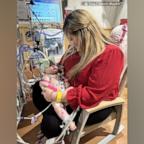
5-month-old baby survives double lung transplant
- May 17, 8:23 AM
ABC News Live
24/7 coverage of breaking news and live events
70 years after Brown vs. Board of Education, we've lost desegregation gains | Opinion
This week marks the 70th anniversary of the Brown vs. Board of Education decision, and this country will no doubt want to pat itself on the back.
It shouldn’t. It can’t.
In a land of better intentions, this day might be one of celebration: a time to recognize strides made, goals achieved. Instead, today is a time of mourning. A time to acknowledge that we’ve quietly and insidiously resegregated our schools. A time to acknowledge that as a country, we’ve never wanted to integrate them in the first place.
According to the National Center for Education Statistics , our public schools are now as segregated as they were in the time of Brown; 60% of Black and Latino students now attend schools that are composed of at least 75% students of color and 48% of white students attend schools that are at least 75% white. Schools are again separate and ferociously unequal: A report by Edbuild tells us that predominantly nonwhite schools receive a whopping $23 billion less in funding than predominantly white schools. My generation of parents has installed and perpetuated more school segregation than the generation of parents who came before us.
The end of integration
We reached peak integration in 1988, the year I graduated high school. My neighbor drove to school in a Porsche, but I had friends who lived in Section 8 housing. We had Black kids and white kids in our high school, Latinos and Asians, Future Farmers of America members who mucked stalls every morning and kids whose parents were engineers.
We broadened our perspectives alongside one another, learning far beyond academics. Most importantly, no one in my high school thought they’d achieve more or less in life simply by dint of their attending our school versus a neighboring school. When I matriculated at Harvard in the fall of ’88, I found myself prepared for the world in a way many of my college peers weren’t: I’d learned how to relate to everyone, even when they couldn’t relate to me.
The decline in school integration since 1988 has been steep.
My high school experience stands in stark contrast to my children’s school experiences. They’ve been the only Black students in their classes too many times to count, and one of them has twice been the Only Lonely in her entire school. The other, for a time, attended an urban high school that was 99% Black.
More from Freep Opinion: 'Rule-of-law' judge? Don’t be fooled. Here's what that really means
History in reverse
As a school board member in both Ann Arbor and Bloomington, Indiana, I’ve had a front row seat for district policies that not only didn't stop the tide towards public school resegregation, but often exacerbated it.
My father lives in Louisville, a city that recently watched its school board give up on school integration after 50 years of fighting lawsuits from Nice White Parents , such as this one, which claimed that diversity “isn’t a compelling state interest.” My father’s commentary: “We are now watching history go backwards.”
Moreover, research shows that school segregation, in our two-click Zillow world, drives residential segregation , which drives everything from environmental racism to health care disparity to the perpetuation of food deserts. But if we aren’t morally concerned, then we can be selfishly concerned. When children are never called upon to broaden their cultural competency, we can be assured that they are, tragically, missing out on a wonderful expansion of the mind .
We can choose good education policy
As an academic, I’ve moved quite a bit. I've stepped down from board positions in Ann Arbor and Bloomington with great sadness, because the sacred work of building our children’s schools is never done. All over this country, in the absence of district design that produces more diverse student bodies, parents continue to make choices that increase school segregation. I’ve appreciated, over the years, the camaraderie of those who have shared my vision of making progress towards excellence through equity, particularly those who understand that desegregating our schools in the only way forward.
One model of particularly effective district design comes from the board of the Jefferson County Public Schools in Louisville, where, in the previous decade, parents received a default list of schools to choose from, pre-populated based on an algorithm that took into account school quality, diversity and travel distance. Parents could then opt into diversity or not, based on the list. Opting into diversity could, for instance, garner one’s child a spot at Chenoweth Elementary, which boasted some of the highest test scores in the district and the most diversity of any elementary school. That model depended on some parents valuing diversity as much as they valued anything else, but so many parents did, making this model effective.
School boards can also opt to reintegrating schools by voting not to accept policies such as Michigan’s schools of choice, a program which offers “school choice” as some kind of bad gravy atop the meatloaf of regular school segregation.
Americans think the US is on the wrong track. That doesn't mean we agree.
Schools of choice allow parents to transfer their children from lower-performing districts to districts parents perceive as better resourced, offering those districts a chance to increase their revenue by poaching students from neighboring districts.
The program so often makes winners out of districts that were already winning, on the backs of taxpaying parents in the district of origin — as it does in the Ann Arbor Public Schools, which absorbs a not insignificant number of students from the neighboring Ypsilanti Community Schools. According to the Brookings Institute , among other research bodies, the existence of such policies directly correlates to racial imbalance in schools, and the need to end them is urgent.
Yet another tool in the box of school boards is to propose mergers that would create socioeconomic balance. The school board I served on in Bloomington has done just that, voting to create a K-2 population in one socioeconomically imbalanced school and a 3-6 population in another, building a more balanced population in both buildings.
It takes courage
What’s missing, then, in delivering resegregation, is not the way. We have examples of so many ways. But creating equity requires structural and systematic change. It requires our remaining steadfast in the face of segregationist opposition. And that requires courage, because parents who don’t support school integration aren’t short on resolve.
Ahead of the vote to merge the two Bloomington schools, the public commentary lasted hours; the comments in parent Facebook groups are ongoing, even though the groups were all made private. “Why is having all the people in poverty at the same school a bad thing?” asked one anonymous poster. Another bemoaned the decrease in his home value that would surely follow.
But Board President April Hennessey, whose decision has been driven by comprehensive data, isn't budging. “We may have a board that doesn’t agree on everything,” she told me, “but we unanimously agree this is overdue. Seeing a united front has made people accept that something will have to happen.”
It will take more boards like hers, and more parents who want to broaden their children’s lives and see all of our children educated, in order to turn the tide on the wreckage that my generation of parents has wrought.
And here’s one segment of the population who might be the most emotionally vested of all: Those of us who integrated schools in the first place. Those of us whose houses were firebombed in Boston because we dared attend a white school. Those of us who had bottles and rocks thrown at us in Arkansas, as a crowd of white parents jeered. Those of us who, with our parents, braved the murderous threats of a nation that hadn’t yet figured out how to more legally and sneakily resegregate the nation’s schools. A lot of us are still alive.
One of them is me.
As a four-year-old entering kindergarten in the late seventies, I was the only Black student in my entire k-8 school. I lived the Ruby Bridges experience, without the benefit of having Robert Coles as therapist; the years I spent at that school still haunt my adult life. I was routinely called the n-word. Told that no one could hold my hand during circle time because my color might “wear off” on their hands. Mistreated by teachers. And told, by classmates, that their parents had forbidden them from playing with me at recess.
I was just one child living that particular American nightmare, but the stakes for all of our children are so high.
The Latin E. pluribus unum was adopted as our national motto in 1776. We’ve never quite gotten to “Out of many, one.” But in choosing to exacerbate public school segregation on a grand, systemic level, the parents of my generation are trying to take us back a few steps even farther than that.
Jacinda Townsend has served as a public school board member for both the Monroe County (Indiana) Community Schools Corporation and the Ann Arbor (Michigan) Public Schools. She is a faculty member at Brown University, and author of the novels Trigger Warning, Mother Country, and Saint Monkey. You can learn more about her at jacindatownsend.com. Submit a letter to the editor at freep.com/letters , and we may publish it online or in print.
- Skip to main content
- Keyboard shortcuts for audio player
Why children with disabilities are missing school and losing skills

Cory Turner

On a recent school day in Del Norte County, Calif., in one of the state's northernmost school districts, 17-year-old Emma Lenover sits at home on the couch.
In some ways, Emma is a typical teen. She loves Disneyland and dance class. But she has already faced more adversity than some classmates will in a lifetime.
"All of October and all of November, there was no school because there was no aide" says Emma's mother, Melony Lenover, leaning her elbows into the kitchen table.
Emma has multiple health conditions, including cerebral palsy. She uses a wheelchair, a feeding tube and is nonverbal. To communicate, she uses a special device, like an iPad, that speaks a word or phrase when she presses the corresponding button. She is also immunocompromised and has mostly done school from home this year, over Zoom, with help from an aide in the classroom. At least, that's what was supposed to happen.
Listen: How staff shortages lead to students with disabilities missing school
Students with disabilities are missing school because of staff shortages.
Melony Lenover says her daughter's special education plan with the district guarantees her a dedicated, one-on-one aide. But the district is in the throes of a special education staffing crisis. In the fall, without an aide, Emma had to stop school. As a result, she missed out on the dance and art classes she loves and regressed on her communication device.
The fact that a district could struggle so mightily with special education staffing that students are missing school – that's not just a Del Norte problem. A recent federal survey of school districts across the U.S. found special education jobs were among the hardest to staff – and vacancies were widespread. But what's happening in Del Norte is extreme. Which is why the Lenovers and five other families are suing the school district , as well as state education leadership, with help from the Disability Rights Education and Defense Fund.

Shots - Health News
'i'm not safe here': schools ignore federal rules on restraint and seclusion.
The California Department of Education says it cannot comment on pending litigation.
"It's very, very, very, very difficult when we are trying to bring people on board, trying to provide these services, when we want the best that we can give – cause that's our job – and we can't," says Del Norte Superintendent Jeff Harris. Harris says he cannot comment on the lawsuit, but acknowledges the staffing crisis in Del Norte is very real.

Emma Lenover, left, works through a literacy lesson at home with special education teacher Sarah Elston. Emma loves these visits and, on this day, waited anxiously at the picture window for Elston to arrive. Cory Turner/NPR hide caption
Emma Lenover, left, works through a literacy lesson at home with special education teacher Sarah Elston. Emma loves these visits and, on this day, waited anxiously at the picture window for Elston to arrive.
In December, after the lawsuit was filed, district special educator Sarah Elston told the local Wild Rivers Outpost : "Just a few days ago I had two or three [aides] call out sick, they weren't coming to work, and so this starts my morning at 5:30 having to figure out who's going to be with this student... It is constant crisis management that we do in special education today."
Del Norte's isolation makes it more difficult to hire needed staff
The district sits hidden away like a secret between Oregon, the frigid Pacific and some of the largest redwood trees in the world. It's too isolated and the pay is not competitive enough, Harris says, to attract workers from outside Del Norte. Locally, these aides – like the one Emma requires – earn about as much as they would working at McDonald's.

Students with disabilities have a right to qualified teachers — but there's a shortage
Harris has even tried hiring contractors from Oregon. But "it's a two-hour drive from southern Oregon here," Harris says, "so four hours of the paid contract time was not even serving students."
The district's hiring process is also too burdensome, according to Harris, taking weeks to fill a job. Hoping to change that, the district declared a special education staffing state of emergency earlier this school year, but the problem remains.
In April, the district still had more than 40 special education job openings posted.
Melony Lenover says she knows supporting Emma can be challenging. But decades ago, Congress made clear, through the federal Individuals with Disabilities Education Act , that her daughter is legally entitled to that support.
The federal government said it would cover 40% of the cost of providing special education services, but it has never come close to fulfilling that promise. In 2023, the National Association of Elementary School Principals said , "Since the law was enacted, the closest the federal government has come to reaching the 40 percent commitment was 18 percent in 2004-2006, and current funding is at less than 13 percent."
All this leaves Melony Lenover chafing at what she considers a double standard for children with disabilities.
"If it'd been one of my typically-functioning kids who are not in school for two months, [the school district] would be coming after me," Lenover says.
In many places, a child who has missed about 18 school days – far less than Emma – is considered chronically absent. It's a crisis that triggers a range of emergency interventions. Lenover says Emma's absences weren't treated with nearly the same urgency.
While Emma Lenover still doesn't have a dedicated aide, she is finally getting help.
"We said as a team, enough is enough," says Sarah Elston, who is Emma's special education teacher. "We're gonna do whatever it takes to get this girl an education."
Elston has been working with her high school principal to patch together as much help as they can for Emma, including shifting a classroom aide to help Emma participate in one of her favorite classes remotely, dance.
How the staffing shortage can become dangerous
Linda Vang is another plaintiff in the Del Norte lawsuit, alongside Emma Lenover's parents. On a recent Thursday, she sits at her kitchen table, her back to a refrigerator covered with family photos. She grips her phone hard, like a lifeline, watching old videos of her son, Shawn.

Schools are struggling to hire special education teachers. Hawaii may have found a fix
The cell phone videos show a young boy with a broad smile, being urged by his mother to pull up his socks. Or being taught by his doting sister to ride a scooter. Or dressed up for what appears to be a wedding, and doing the chicken dance. He is a joyful kid.
Much has changed since then.
Shawn is a pseudonym, chosen by Vang and his attorneys in the lawsuit. We're not using his real name because Shawn is a minor and his mother asked us to protect his identity.
To understand Shawn's role in the lawsuit – and the depths of Del Norte's staffing crisis – you have to understand what happened to him on Tuesday, Feb. 28, 2023.
He was 15 at the time. Shawn has autism and is nonverbal, and as part of his special education plan, he gets his own, dedicated aide at school. But again, because of Del Norte's struggles to hire enough special education staff, those aides are often in short supply and undertrained.
Shawn's lead teacher that day, Brittany Wyckoff, says, when he grew frustrated in class, his fill-in aide did not follow procedure. It was snack time, but "this staff said, 'No, you're not being calm' and pulled [the snack] away. So that wasn't the appropriate way to handle it."
Another staff member later told police Shawn had begun to calm down, but the aide still wouldn't give him the snack – pistachios. Instead, Wyckoff says, the aide used a firm tone and continued telling Shawn to calm down. Shawn got more agitated, hitting himself in the face.
The aide later told police he began to worry Shawn might try to bite him – because Shawn had bitten other staff before. Witnesses told police he warned Shawn, "You will not bite me. You will not bite me."
Wyckoff says standard procedure, when a student gets agitated and potentially violent, is to move classroom furniture – a table, a desk – between your body and the student. Instead, Wyckoff says, this aide moved furniture out of the way. When Shawn moved toward the aide, unobstructed, the aide raised his hands.
"The staff member just instantly reached out and choked [Shawn]," Wyckoff remembers. "And full-on, like one hand over the other hand choke."
Multiple staff told police, Shawn had not tried to bite the aide. Wyckoff says she was yelling at the aide to stop and finally pulled him off of Shawn, "who was turning purple."
How the incident led to missed school
The aide left school after choking Shawn and went to a local bar for a beer, according to the police report. He later told police he'd acted in self-defense. When he was arrested, for child endangerment, and asked why he hadn't called police himself, the aide said, because he'd been in many similar situations and didn't think this rose to that level.
The district attorney ultimately chose not to file charges.

Emma, left, works with her sister, Kelsey Mercer, to join one of her favorite school classes, dance, from home. Cory Turner/NPR hide caption
Emma, left, works with her sister, Kelsey Mercer, to join one of her favorite school classes, dance, from home.
Linda Vang says the incident changed Shawn. He became less trusting and was scared to return to the classroom. "It is the hardest thing in my life to watch my son go through this."
To make matters worse, after the incident, the school couldn't provide Shawn with a new aide, and, like Emma Lenover, he couldn't do school without one. After the encounter, he was forced to miss two months of school – because of the staffing crisis.
"It was just week after week, them telling us, 'There's no staff. There's no staff,' " Vang remembers. "I feel for him. I'm angry for him. I'm upset for him. It's hard."
Again, Superintendent Jeff Harris can't comment on the specifics of the lawsuit, or on the incident involving Shawn, but he defends the district.
"We don't come in everyday going, 'How can we mess with people's lives?' We come in every day going, 'What can we do today to make this work?' "
Shawn, like Emma, lost skills during his time away from school. His mother says he struggled more to control his behavior and was less willing to use his communication device.
Shawn is back at school and finally improving, Vang says. He even likes the aide he has now.
"It has been very hard the last year. But you know, we're getting there. You know, I'm doing my best, every single day."
With inadequate staff, students can lose vital skills
Wyckoff, Shawn's former teacher, says the staff shortage is so acute that some aides are being hired with little to no special education experience.
"They could know absolutely nothing about working with a student with special needs," Wyckoff says, "and [the district] is like 'Hey, you've gotta work with the most intensively behaviorally challenging student. Good luck!'"

After Months Of Special Education Turmoil, Families Say Schools Owe Them
Wyckoff says the staff the district is able to hire need more and better training, too. The stakes are just too high.
Superintendent Harris says the district does provide staff training, but he also has to balance that with the need to get staff into classrooms quickly.
Veteran special education staff in Del Norte tell NPR they've seen what happens when students with disabilities don't get consistent, quality support: They lose skills.
"One particular student, he was doing well," says Emily Caldwell, a speech-language pathologist in the district. "We were talking about removing his communication device from coming to school because he's communicating verbally."
Caldwell works with many students who, like Shawn and Emma, use a communication device. This student, though, had been learning to use his own voice. It was a big deal, Caldwell says. But the student began losing those skills as he was shuffled between inexperienced staff.

Emma, right, communicates with her sisters Ashley Lenover, left, and Kelsey Mercer using body language and a special tablet device. Cory Turner/NPR hide caption
Emma, right, communicates with her sisters Ashley Lenover, left, and Kelsey Mercer using body language and a special tablet device.
Now, "he's not communicating verbally at school anymore, he's only using his device and only when prompted," Caldwell says.
"I have a student whose toileting skills have regressed," says Sarah Elston, Emma's teacher. "I have more than one student who have lost skills on their [communication] device, that is their only way of communicating with the world."
This sense of loss, Elston says, keeps her up at night.
Superintendent Jeff Harris acknowledges the effects of the staffing crisis have been painful.
"When you have a child who can't do something that they were able to do before because they don't have that consistency, that's hard. I mean, that's a knife to the heart."
Looking forward
The lawsuit against the Del Norte Unified School District and state education officials is ongoing. The families hope it will not only help their children, but also raise awareness around a crisis they know is larger than themselves – and larger than Del Norte.
In the meantime, Del Norte teachers are doing everything they can to support their students with disabilities.
Elston, Wyckoff and Caldwell all say they have raised alarms with the district around students not getting the support they're entitled to – and even being mistreated by untrained or inexperienced staff.
Caldwell says some veteran staff have quit out of frustration. Though she insists, she's staying.
"I just worry," Caldwell says, tearing up. "The kids I work with, most of them don't communicate effectively without support. And so they can't go home and be like, 'Hey, Mom, so-and-so held me in a chair today.' And so I feel like, if I wasn't there and if I wasn't being that voice and that advocate, who would be?"
Digital story edited by: Nicole Cohen Audio stories produced by: Lauren Migaki Audio stories edited by: Nicole Cohen and Steve Drummond Visual design and development by: LA Johnson
- Election 2024
- Entertainment
- Newsletters
- Photography
- Personal Finance
- AP Investigations
- AP Buyline Personal Finance
- AP Buyline Shopping
- Press Releases
- Israel-Hamas War
- Russia-Ukraine War
- Global elections
- Asia Pacific
- Latin America
- Middle East
- Election Results
- Delegate Tracker
- AP & Elections
- Auto Racing
- 2024 Paris Olympic Games
- Movie reviews
- Book reviews
- Personal finance
- Financial Markets
- Business Highlights
- Financial wellness
- Artificial Intelligence
- Social Media
Why the speech by Kansas City Chiefs kicker was embraced at Benedictine College’s commencement
The Benedictine College sign is seen Wednesday, May 15, 2024, in Atchison, Kan., days after Kansas City Chiefs kicker Harrison Butker gave a commencement speech that has been gaining attention. Butker’s speech has raised some eyebrows with his proclamations of conservative politics and Catholicism, but he received a standing ovation from graduates and other attendees of the commencement ceremony on Saturday, May 11. (AP Photo/Nick Ingram)
Students leave after attending a Catholic Mass at Benedictine College Sunday, Dec. 3, 2023, in Atchison, Kan. Students told The Associated Press in interviews they embrace the college’s emphasis on Catholic teaching and practice. (AP Photo/Charlie Riedel)
FILE - Catholics pray during Mass at Benedictine College Sunday, Dec. 3, 2023, in Atchison, Kan. Enrollment, now about 2,200, has doubled in 20 years. Some 85% of its students are Catholic, according to the Cardinal Newman Society. (AP Photo/Charlie Riedel, File)
The campus at Benedictine College in Atchison, Kan., was quiet on Wednesday, May 15, 2024, days after Kansas City Chiefs kicker Harrison Butker gave a commencement speech that was getting attention. Butker’s speech has raised some eyebrows with his proclamations of conservative politics and Catholicism during his weekend speech, but he received a standing ovation from graduates and other attendees of the commencement ceremony on Saturday, May 11. (AP Photo/Nick Ingram)
- Copy Link copied
Kansas City Chiefs kicker Harrison Butker may have stirred controversy in some quarters for his proclamations of conservative politics and Catholicism on Saturday, but he received a standing ovation from graduates and other attendees of the May 11 commencement ceremony at Benedictine College in Atchison, Kansas.
The fast-growing college is part of a constellation of conservative Catholic colleges that tout their adherence to church teachings and practice — part of a larger conservative movement in parts of the U.S. Catholic Church.
Butker’s 20-minute speech hit several cultural flashpoints.
Butker, a conservative Catholic himself, dismissed Pride month as consisting of the “deadly sin sort of pride” while denouncing abortion and President Joe Biden’s handling of the pandemic. He said women are told “diabolical lies” about career ambition when “one of the most important titles of all” is that of homemaker. He said this is not time for “the church of nice” and in particular blasted Catholics who support abortion rights and “dangerous gender ideologies.”
WHAT IS BENEDICTINE COLLEGE?
Benedictine College is a Catholic college in Atchison, Kansas, that traces its roots to 1858. It is located about 60 miles north of Kansas City., and has an enrollment of about 2,200.
LOTS OF COLLEGES ARE CATHOLIC. WHAT MAKES IT DISTINCTIVE?
In some ways, Benedictine College sounds like a typical Catholic college. Its “mission as a Catholic, Benedictine, liberal arts, residential college is the education of men and women within a community of faith and scholarship,” according to its website.
But its home to more traditional expressions of Catholicism, such as the Latin Mass, all-night prayer vigils and a strict code of conduct. Its mission statement further cites its commitment to “those specific matters of faith of the Roman Catholic tradition, as revealed in the person of Jesus Christ and handed down in the teachings of the Church.”
The school gets a high ranking from the Cardinal Newman Society, a group that touts nearly two-dozen conservative colleges that exhibit what it calls “faithful Catholic education.” That includes upholding church teachings and Catholic identity while providing ample Masses and other devotional activities in shaping their students.
The society seeks to differentiate schools that “refuse to compromise their Catholic mission” from those that have become “battlegrounds for today’s culture wars.” Others praised by the society include Catholic University of America in Washington, D.C., Ave Maria University in Florida and Franciscan University of Steubenville, Ohio.
The society’s ranking says Benedictine benefits from having monks in residence, multiple Masses and prayer groups, spiritually focused organizations and theology programs with professors with a “mandatum” of approval from the local bishop.
HOW HAS THAT RESONATED WITH STUDENTS?
Benedictine’s enrollment has doubled in the past 20 years. Some 85% of its students are Catholic, according to the Cardinal Newman Society.
Students told The Associated Press in interviews they embrace the college’s emphasis on Catholic teaching and practice.
“It’s a renewal of, like, some really, really good things that we might have lost,” one student told the AP in its recent article on the revival of conservative Catholicism.
OTHER FACTS
Annual tuition for full-time undergraduates is $35,350, but Benedictine says 100% of its students receive some form of financial aid.
Benedictine’s sports teams, called the Ravens, compete in National Association of Intercollegiate Athletics. Its athletics department says it is committed to ”setting the highest standards for academic success, athletic competition, ethical behavior, fiscal responsibility, and spiritual development.”
HOW DID GRADUATES REACT TO BUTKER’S SPEECH?
Video of the commencement shows virtually all the graduates and spectators rising to a standing ovation, but student interviews showed a more mixed reaction.
ValerieAnne Volpe, 20, who graduated with an art degree, lauded Butker for saying things that “people are scared to say.”
“I was thinking about my dad, who was also here, and how he’s probably clapping and so happy to see what he would say is a real man (reflecting) family values, good religious upbringing and representation of Christ to people,” she said. “You can just hear that he loves his wife. You can hear that he loves his family.”
Kassidy Neuner, 22, said the speech felt “a little degrading” and gave the impression that only women can be a homemaker.
“I think that men have that option as well,” said Neuner, who will be spending a gap year teaching before going to law school. “And to point this out specifically that that’s what we’re looking forward to in life seems like our four years of hard work wasn’t really important.”
Elle Wilbers, 22, who is heading to medical school in the fall, said the Catholic faith focuses on mothers, so that portion of the speech wasn’t surprising. She was more shocked by his criticism of priests and bishops “misleading their flocks” and a quip comparing LGBTQ+ Pride month to one of the seven deadly sins.
“We should have compassion for the people who have been told all their life that the person they love is like, it’s not okay to love that person,” Wilbers said. “It was sort of just a shock. I was like, ‘Is he really saying this right now?’”
WHAT DID BENEDICTINE’S NUNS SAY?
The Benedictine Sisters of Mount St. Scholastica, one of the founding sponsors of Benedictine College, issued a statement Thursday criticizing Buter’s speech, contending it did not properly represent the college’s values.
“Instead of promoting unity in our church, our nation, and the world, his comments seem to have fostered division,” the statement said.
“One of our concerns was the assertion that being a homemaker is the highest calling for a woman,” it added. “We sisters have dedicated our lives to God and God’s people, including the many women whom we have taught. ... These women have made a tremendous difference in the world in their roles as wives and mothers and through their God-given gifts in leadership, scholarship, and their careers.”
Associated Press religion coverage receives support through the AP’s collaboration with The Conversation US, with funding from Lilly Endowment Inc. The AP is solely responsible for this content.
It's good news for Central Jersey school districts hit hard by state aid cuts
There is hope for the 140 New Jersey districts, many in Central Jersey, impacted by a reduction in state aid for the upcoming school year.
Gov. Phil Murphy has signed into law a bill that restores a portion of the school aid cuts and allows property tax levy cap flexibility for districts that have seen an overall decline in state aid in recent years.
Murphy also signed legislation to allow school districts to finalize budgets after the legislature approves the new state budget.
That's good news for Central Jersey school districts which have been struggling to draft budgets because of the state aid cuts.
South Brunswick Superintendent of Schools Scott Feder said the districts are now "able to put the focus back on teaching and learning and not on cuts and fees."
In Central Jersey schools, the state cut $2.7 million in aid to Hillsborough schools, $1.4 million to South Brunswick schools, $2.5 million to Old Bridge schools, and $1.32 million to East Brunswick schools. The biggest cut was in South Plainfield which saw a loss of nearly 3.6 million.
For South Brunswick, Feder said the bill will allow the district to "plan strategically and focus on improvement, not survival."
"We moved away from thinking about doing the same with less, to thinking about how to imagine what is possible," he said. "This is key and one of the most important elements of the bill. When you look at the impact of S2 combined with a 2% cap while trying to manage 7% inflation, the outcome has been a disaster for said school districts. SBSD has been treading water for a while now and this year was the tipping point."
Feder said his district may be able to rescind many of the cuts that were proposed. Some reductions were related to enrollment declines, but many were related to budget loss, he said.
More: South Brunswick schools braces for 'significant losses' in staff and programs
More than 60 positions in South Brunswick were going to be axed because of the loss in state aid and other budget issues. Now, the superintendent, a "good deal of the staffing impact can be reversed" and much of the proposed fee increases will not occur, with the exception of subscription busing for parents who no longer have courtesy busing.
"Our ultimate goal is to maintain reasonable class sizes, offer outstanding programs and ensure that everything we do is sustainable," Feder said. "Sustainability is one of the biggest positives with this bill. We cannot continue down the path we were on every year figuring out what is going to be cut next."
In Hillsborough, the Board of Education had approved a $145.6 million budget that called for several cuts, including the elimination of middle school sports and some teaching positions.
Superintendent of Schools Michael Volpe said the district was caught in "financial shackles" that causes "devastation" and prompted "draconian cuts."
Now Volpe said he is "happy" to see that 45% of the district's state aid cut is being restored as a one-time grant.
More: Hillsborough schools in 'financial shackles', facing 'draconian cuts'
"This will save staffing cuts that were included as a part of our final budget," Volpe said. "Additionally, the ability to not be restricted by the 2% cap is something that our Board of Education will be carefully considering. Hillsborough has lost significant money over the past several years and I want us on the same level as all other schools in Somerset County. All of Hillsborough's students deserve the outstanding education my four children received from this school district. I'm not just a Superintendent in Hillsborough. I am a resident, a taxpayer, and a parent. This town means a lot to me and our kids deserve the best."
Like many school districts impacts by years of aid reductions, Old Bridge continued its fight this year to reverse state aid funding cuts. In the original budget unveiled by Murphy in February, Old Bridge schools saw a 9.41% decrease in state aid for the 2024-2025 school year, the seventh consecutive year of cuts for the district.
Old Bridge Superintendent of Schools David Cittadino said the board will take the opportunity provided by new legislation to re-examine budgetary options for the 2024-2025 school year.
"It is never optimal to increase taxes," Cittadino said. "However, reductions in state aid, increases in transportation costs, healthcare costs, inflation, and the discontinuation of grants make exploring these options a necessity if our shared hope is to save our schools from catastrophic cuts to programming and staffing as a result of a broken state school funding formula.""Over 140 districts are experiencing drastic state aid reductions that would require them to make rash cuts to student programs and jobs," said state Sen. Andrew Zwicker (D-District 16), one of the legislation's sponsors. "Our public schools are the best in the nation. We cannot let them fall into disarray by asking districts to scale back spending year after year. This program is a stopgap that will provide relief to districts for the upcoming school year as we continue to work to find a stable long-term school funding solution.""We know that even in the midst of unprecedented school aid and investment in education, many districts are losing state aid," said Assemblyman Roy Freiman (D-District 16), a Hillsborough resident who co-sponsored the bills. "This bill recognizes the need to act swiftly, as some school districts are already working on budgetary decisions. Delays in our response could result in devastating staff cuts being implemented that could otherwise be avoided."The legislation provides grants equal to 45% of a school district’s state school aid reduction for the 2024-2025 school year. The bill gives $44.7 million in grants to certain school districts facing nearly $106 in combined cuts and allows them to seek property tax increases above the state’s 2% cap on such hikes.
email: [email protected]
Cheryl Makin is an award-winning features and education reporter for MyCentralJersey.com , part of the USA Today Network. Contact: [email protected] or @CherylMakin . To get unlimited access, please subscribe or activate your digital account today.

IMAGES
VIDEO
COMMENTS
Decent education as a concept is applicable to all levels of education, but when it comes to connecting educational experiences with downstream work outcomes - especially using a PWT lens - we feel high school is the most appropriate setting to assess the construct. This is because high school is where most students begin to connect their ...
In evaluating the best states for education - one of eight categories driving the overall Best States rankings - U.S. News examined metrics tied to both higher education and the space from pre ...
The school has adopted a mindfulness program that helps students cope with stress and develop the skill of self-reflection. A new maker space is being used to bring hands-on science, technology, engineering, and math into classrooms. The school's drama club, offered free after school twice a week, now has almost 100 students involved.
Our most popular education articles of 2020 can help you manage difficult emotions and other challenges at school in the pandemic, all while supporting the social-emotional well-being of your students. In addition to these articles, you can also find tips, tools, and recommended readings in two resource guides we created in 2020: Supporting ...
There are many countries where everyone receives a decent education no matter where the child was born or who are her parents. The methods, the way the education system is organized will vary across countries like Singapore, Canada, Russia, Finland, Japan, Ireland or New Zealand. While those systems are permanently trying to improve themselves ...
DECENT EDUCATION definition | Meaning, pronunciation, translations and examples
Decent education is conceptualized as playing an important role in preparing young people for college and career and eventual access to decent and satisfying work. While this is a promising extension of psychology of working theory for youth (PWT), the construct was derived from a review of literature, and needs to be informed by research ...
ity education for all and promote lifelong learning. Why does education matter? Education enables upward socioeconomic mobility and is a key to escaping poverty. Education helps reduce
Decent education is conceptualized as playing an important role in preparing young people for college and career and eventual access to decent and satisfying work. While this is a promising ...
Decent education is conceptualized as playing an important role in preparing young people for college and career and eventual access to decent and satisfying work. While this is a promising ...
This a great recipe for 'cooking' a good education system, and little disagreement is perhaps possible on the ingredients. However, from my personal experience of living and working in a country (India) where the need for good quality education system is acute, and yet the political will and resource allocation seems to lag significantly behind, I believe that much of such recipes focus on ...
Education liberates the intellect, unlocks the imagination and is fundamental for self-respect. It is the key to prosperity and opens a world of opportunities, making it possible for each of us to contribute to a progressive, healthy society. Learning benefits every human being and should be available to all. Resources.
Personal. Education should enable young people to engage with the world within them as well as the world around them. In Western cultures, there is a firm distinction between the two worlds, between thinking and feeling, objectivity and subjectivity. This distinction is misguided.
Transforming education to change our world. UNESCO provides global and regional leadership on all aspects of education from pre-school to higher education and throughout life. It works through its Member States and brings together governments, the private sector and civil society to strengthen education systems worldwide in order to deliver ...
Education is a human right, a powerful driver of development, and one of the strongest instruments for reducing poverty and improving health, gender equality, peace, and stability. It delivers large, consistent returns in terms of income, and is the most important factor to ensure equity and inclusion. For individuals, education promotes ...
Education is important because it opens up job prospects, encourages brain development, teaches life skills and increases likelihood of financial security among many other reasons. Let's dive deeper into why is education so important, and discuss the reasons we celebrate educators.
Education is the most powerful weapon which you can use to change the world. — Nelson Mandela, 1918-2013, South African President, philanthropist. The object of education is to teach us to love ...
DOI: 10.1016/j.jvb.2022.103771 Corpus ID: 251705769; Decent education as a precursor to decent work: An overview and construct conceptualization @article{Duffy2022DecentEA, title={Decent education as a precursor to decent work: An overview and construct conceptualization}, author={Ryan D. Duffy and Haram J. Kim and Gianella Perez and Carla G. Prieto and Cagil Torgal and Maureen E. Kenny ...
This article advances a prevention and positive youth development perspective for promoting access to decent work and decent lives for all. We apply the psychology of working theory to consider the readiness of youth to contribute to this aspirational goal and the roles that education and career development education could play in furthering a reality of decent work and decent lives.
Education is the transmission of knowledge, skills, and character traits and manifests in various forms. Formal education occurs within a structured institutional framework, such as public schools, following a curriculum. Non-formal education also follows a structured approach but occurs outside the formal schooling system, while informal education entails unstructured learning through daily ...
Decent education is conceptualized as playing an important role in preparing young people for college and career and eventual access to decent and satisfying work. While this is a promising extension of psychology of working theory for youth (PWT), the construct was derived from a review of literature, and needs to be informed by research, including youth perspectives.
Socioeconomic barriers prevent children from utilising educational opportunities equally. Source: gpointstudio / Shutterstock. Horace Mann, a pioneer of American public schools in the 19th century ...
These are the 10 new Ivies with the lowest average net price, according to Department of Education data: 1. University of Florida. 2. University of North Carolina—Chapel Hill. 3. Georgia ...
DECENT definition: 1. socially acceptable or good: 2. dressed or wearing clothes: 3. socially acceptable or good: . Learn more.
A teenager from Chicago walked in her graduation ceremony this month after earning her doctoral degree at 17. Dorothy Jean Tillman II told "Good Morning America" that she was homeschooled in her ...
3:58. This week marks the 70th anniversary of the Brown vs. Board of Education decision, and this country will no doubt want to pat itself on the back. It shouldn't. It can't. In a land of ...
Students with disabilities are missing school because of staff shortages. Emma has multiple health conditions, including cerebral palsy. She uses a wheelchair, a feeding tube and is nonverbal. To ...
The Benedictine College sign is seen Wednesday, May 15, 2024, in Atchison, Kan., days after Kansas City Chiefs kicker Harrison Butker gave a commencement speech that has been gaining attention. Butker's speech has raised some eyebrows with his proclamations of conservative politics and Catholicism, but he received a standing ovation from ...
That's good news for Central Jersey school districts which have been struggling to draft budgets because of the state aid cuts. ... the Board of Education had approved a $145.6 million budget that ...